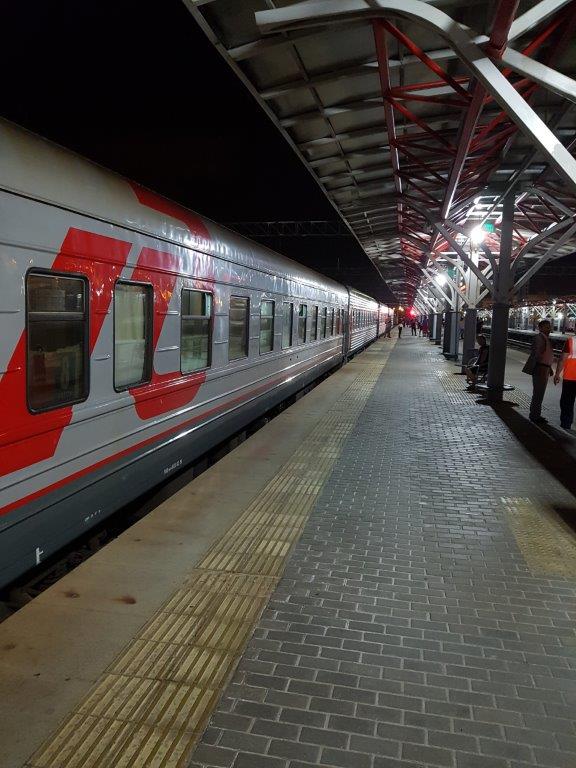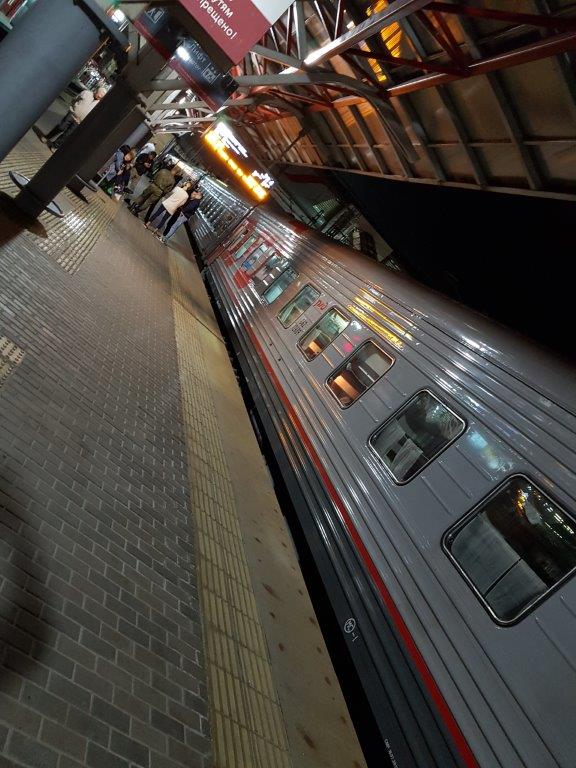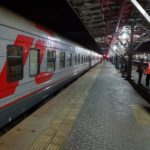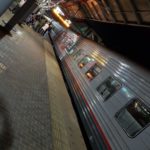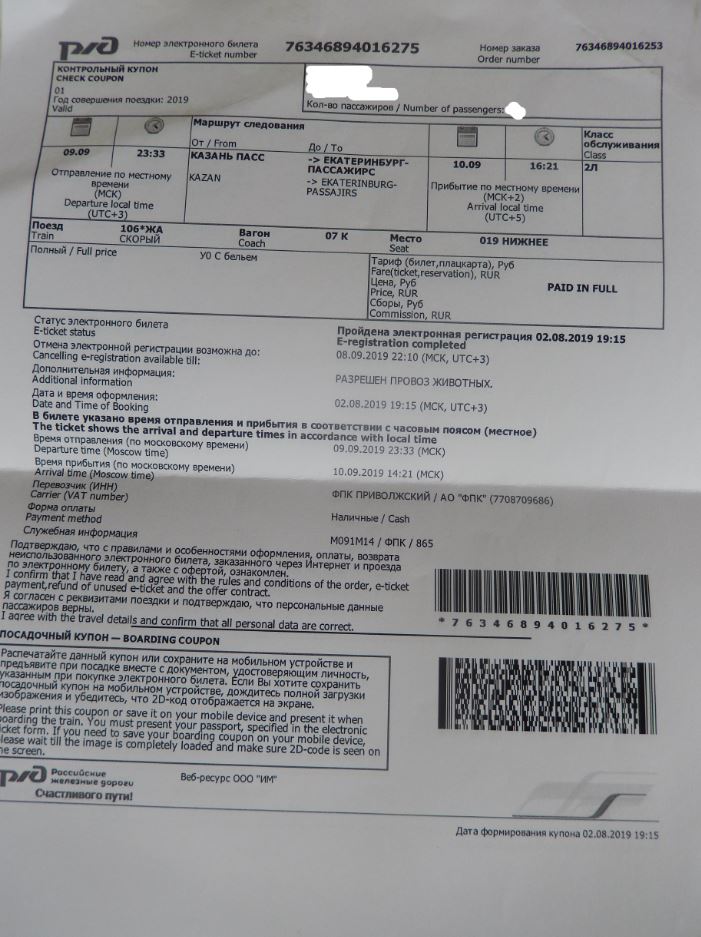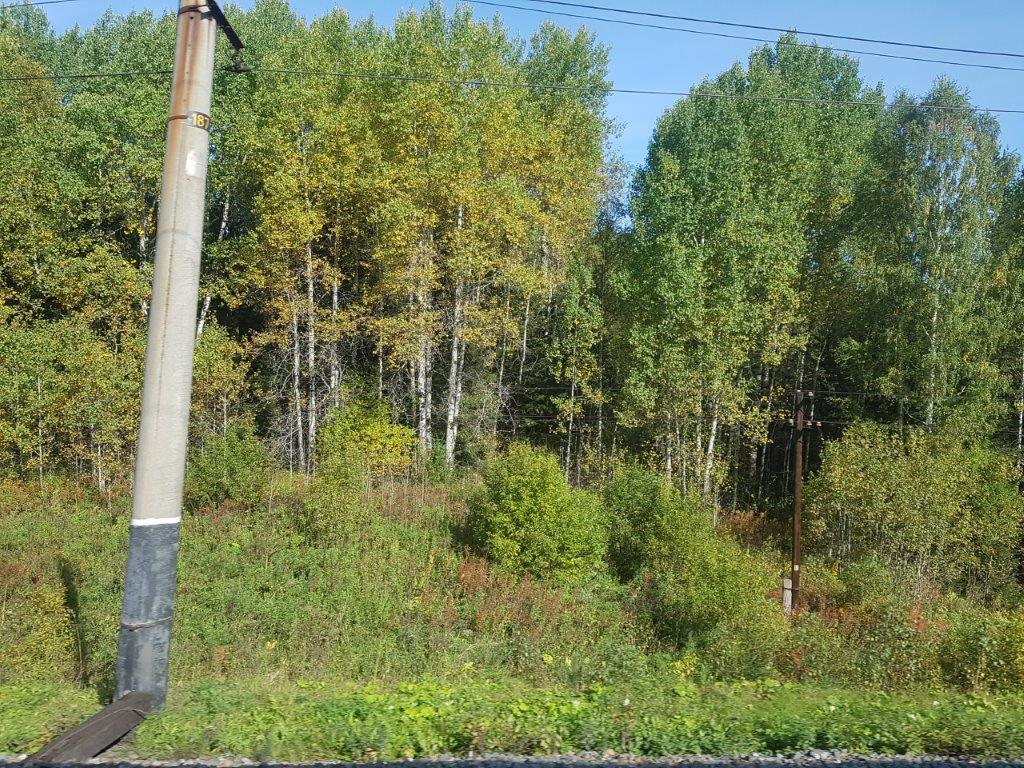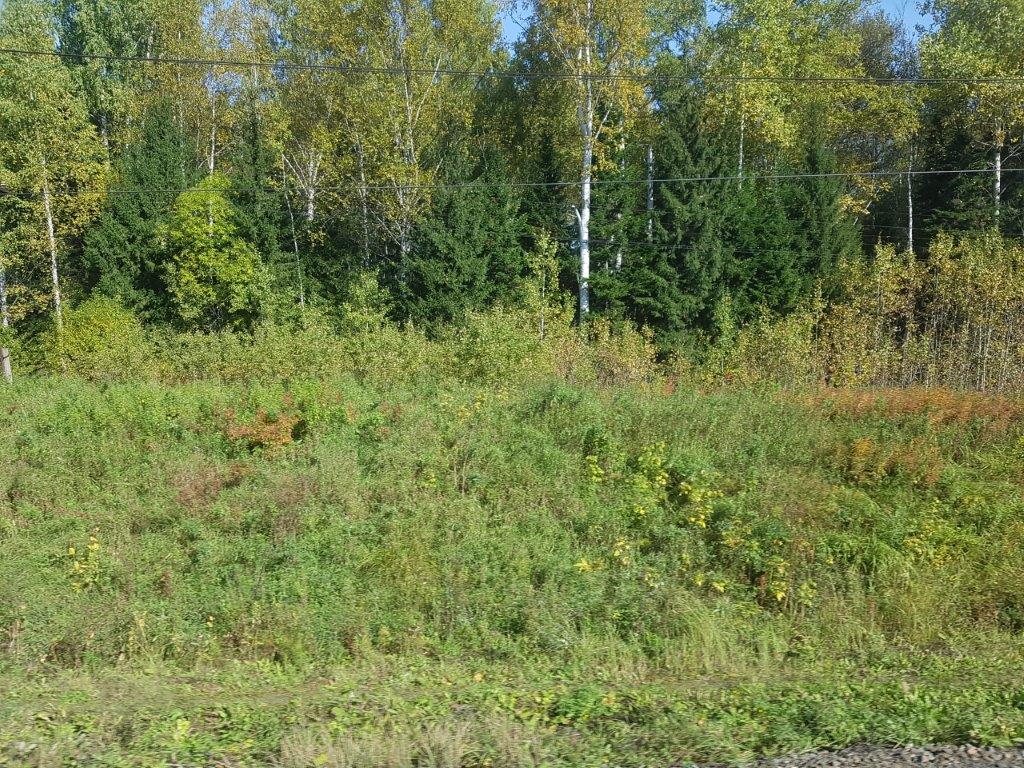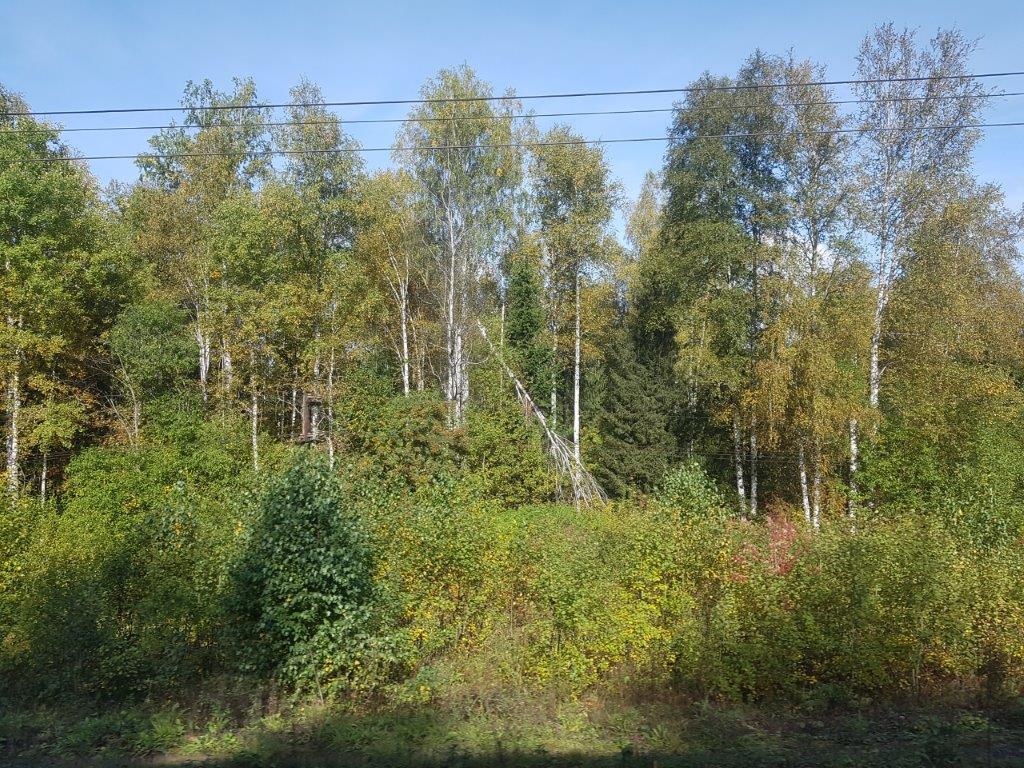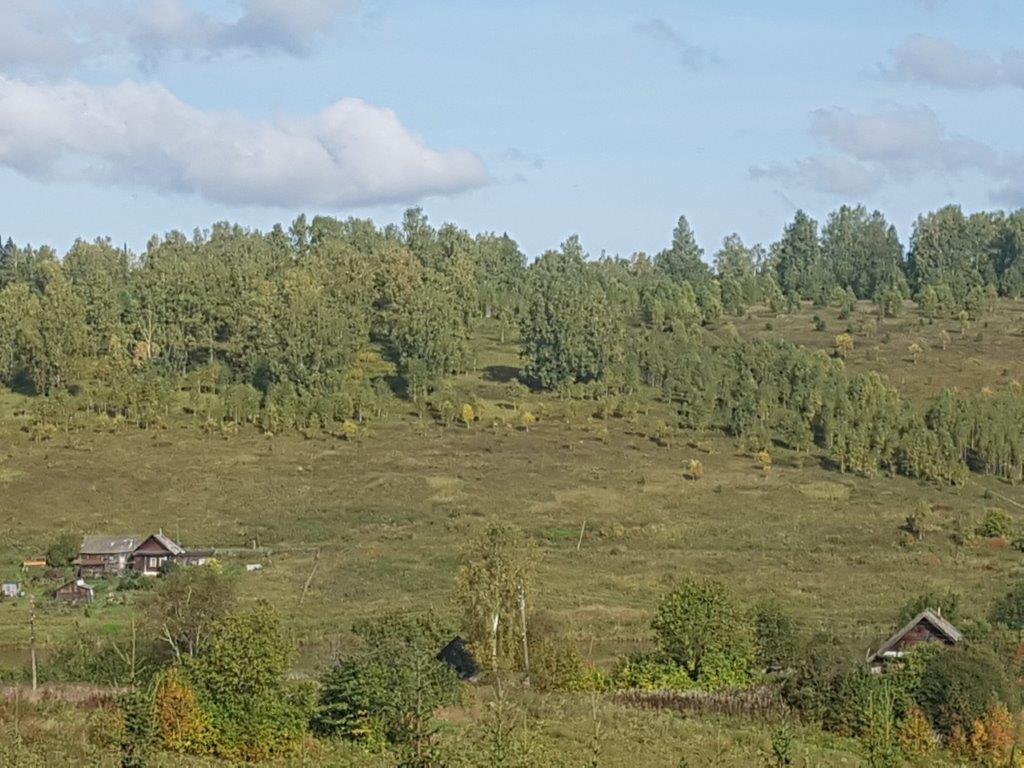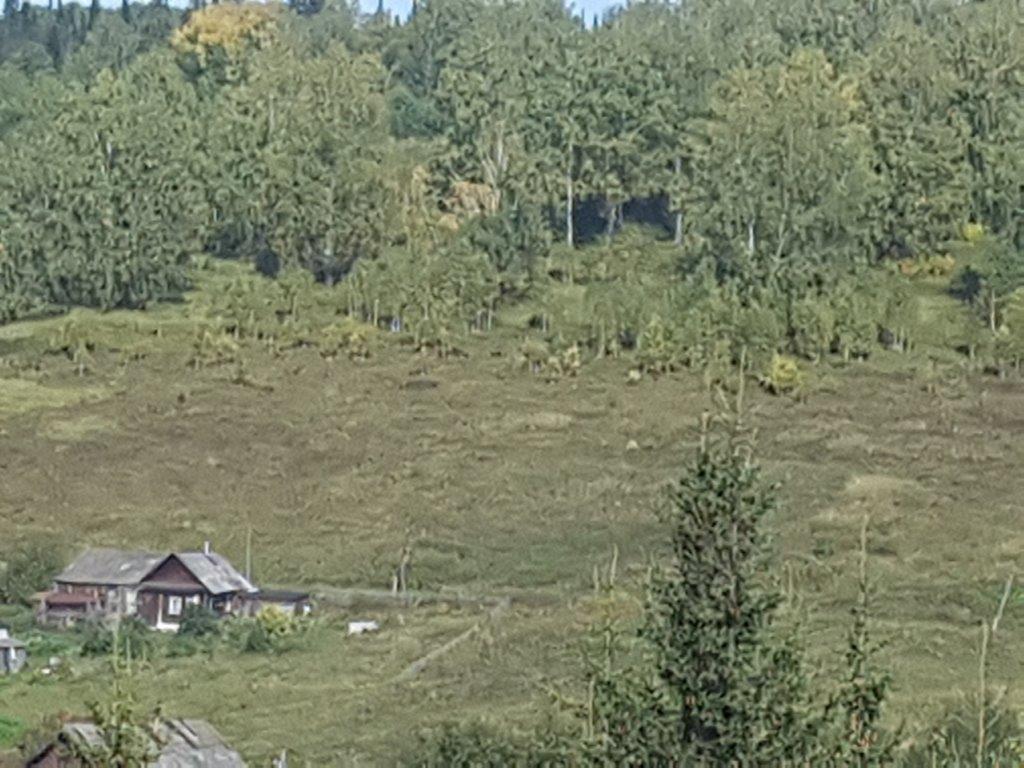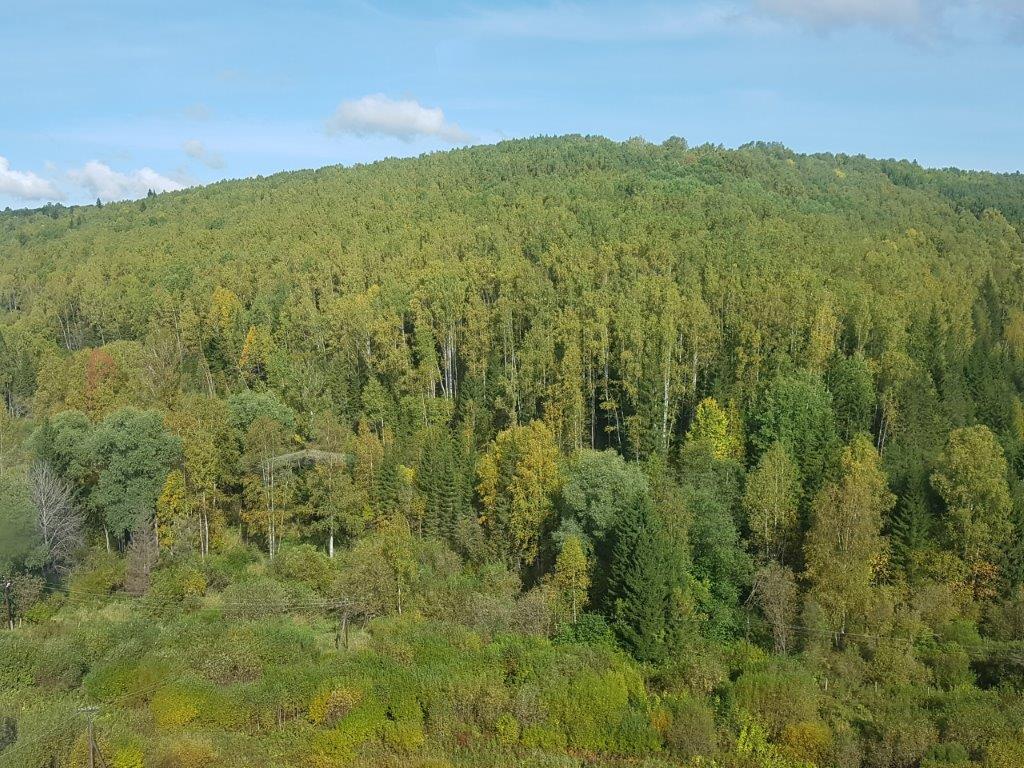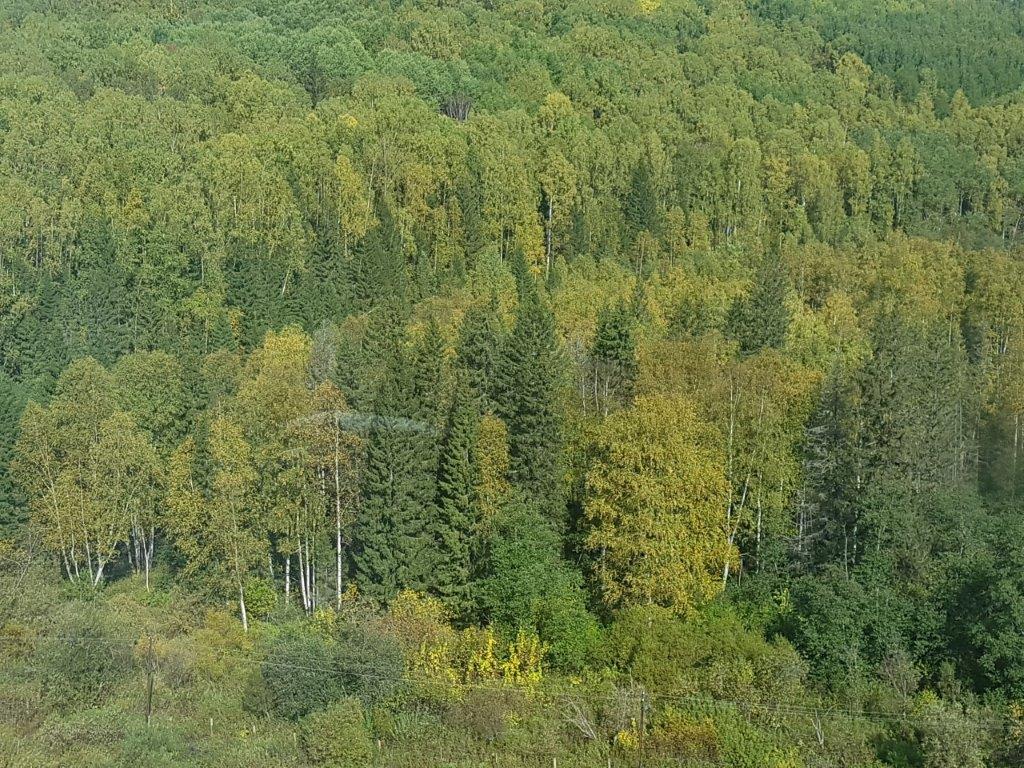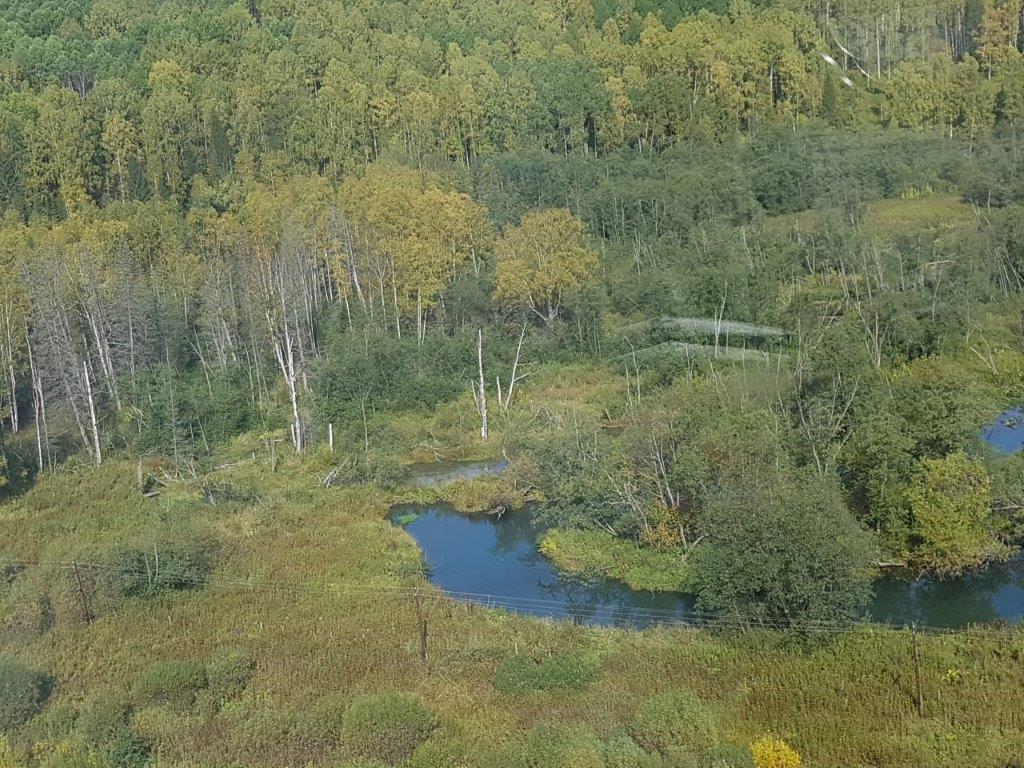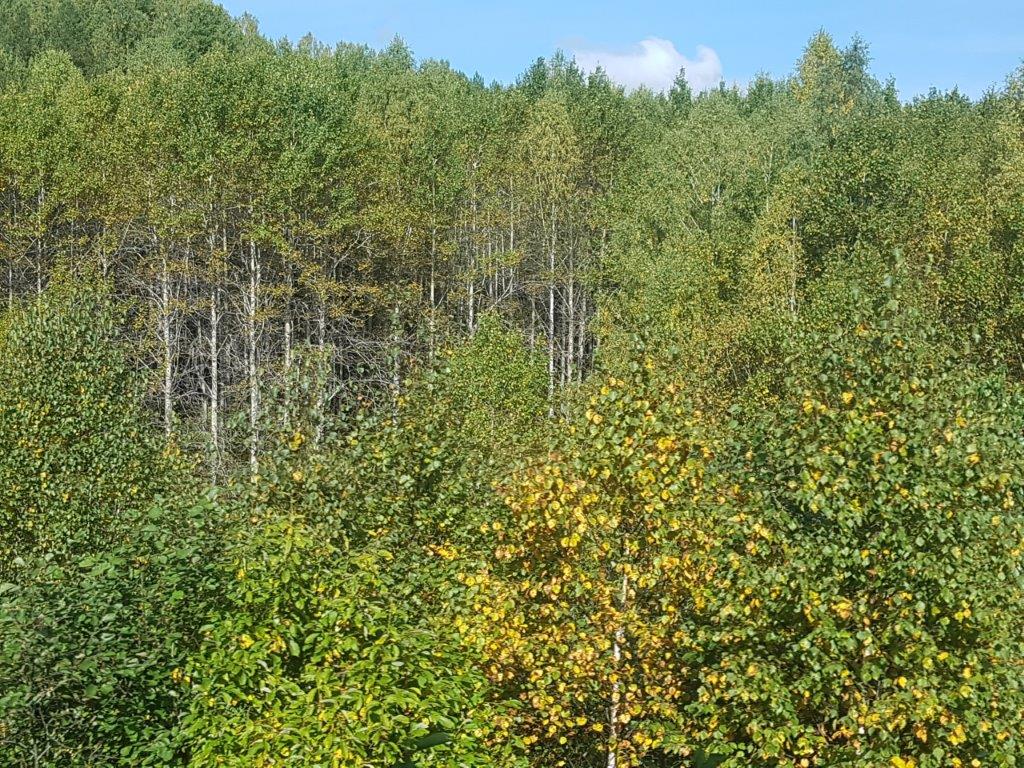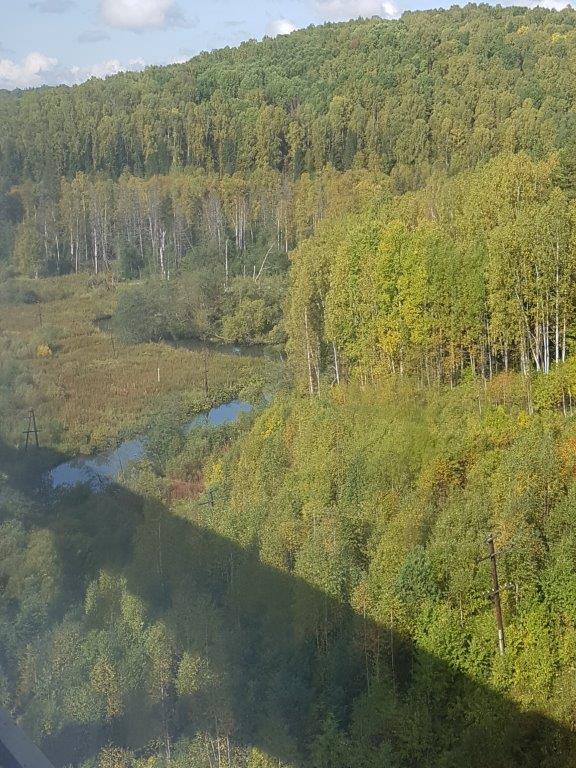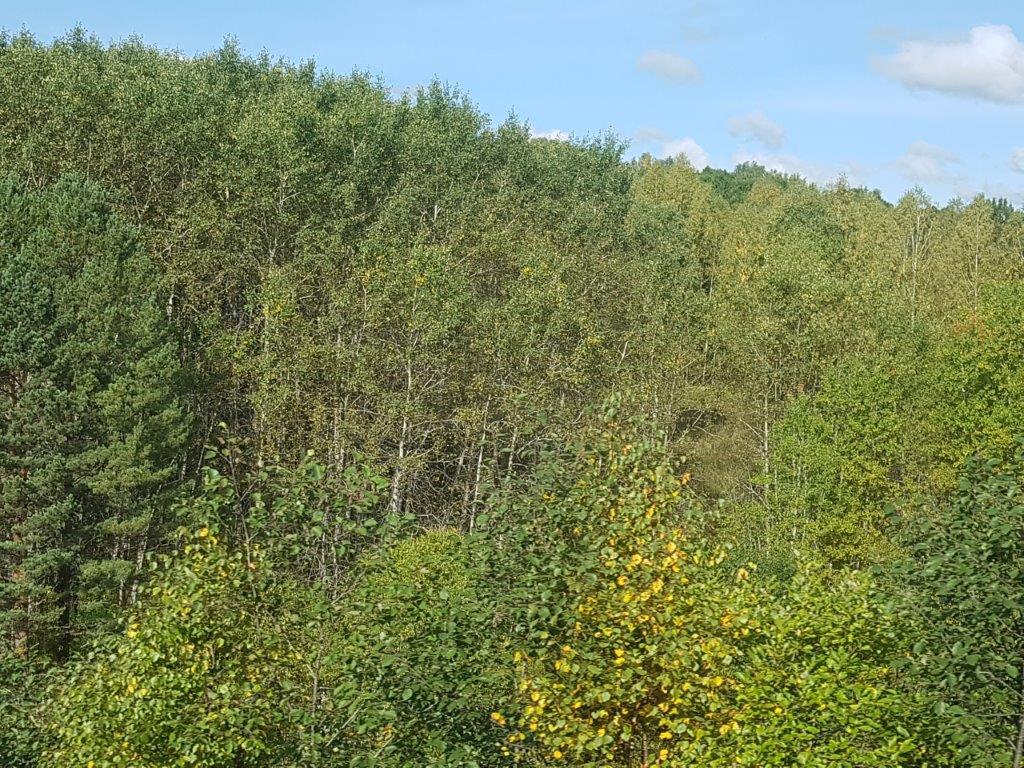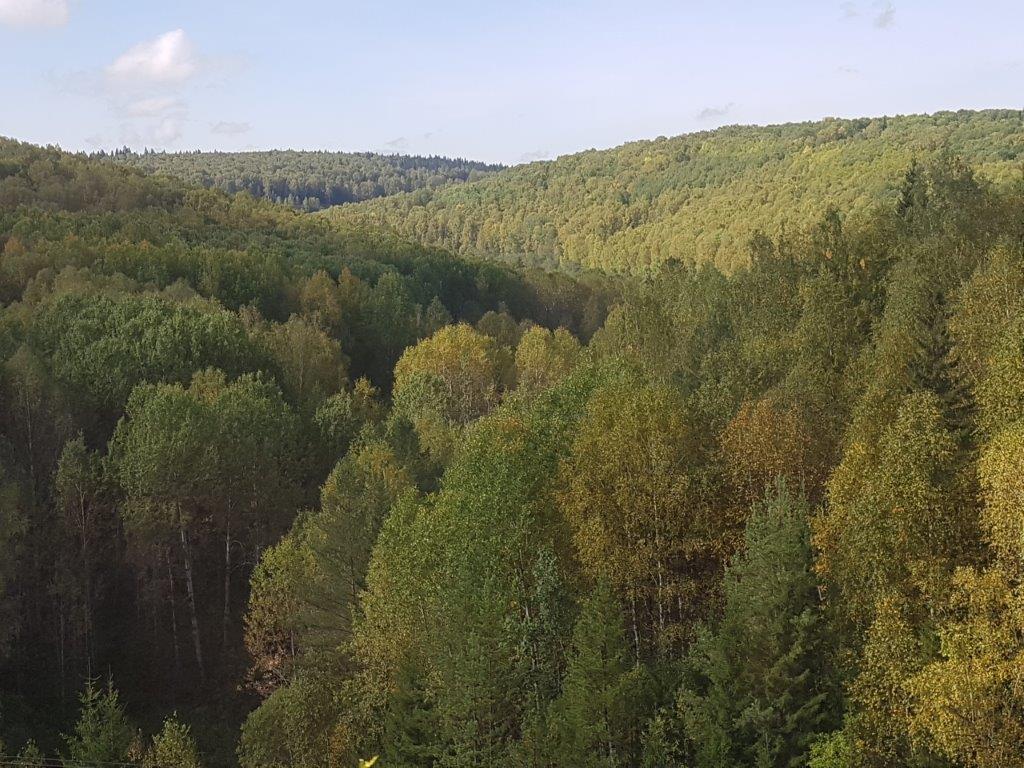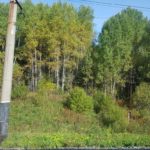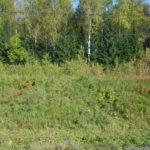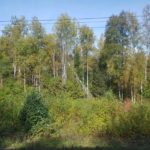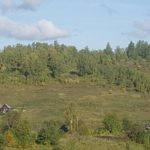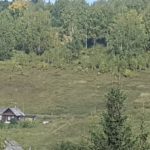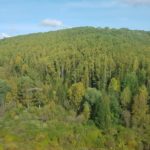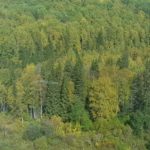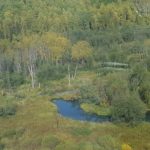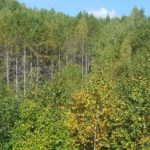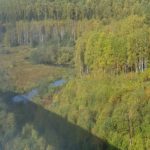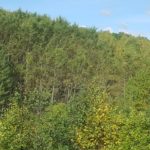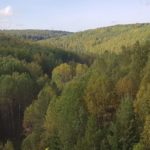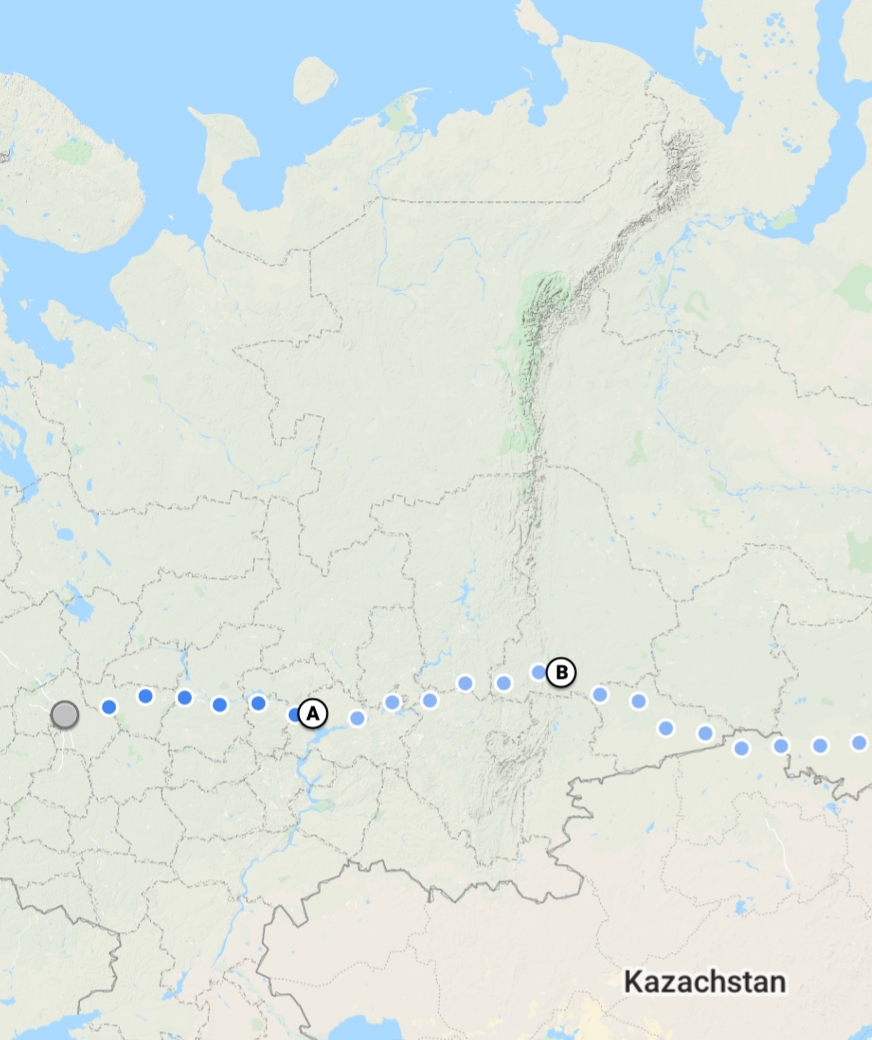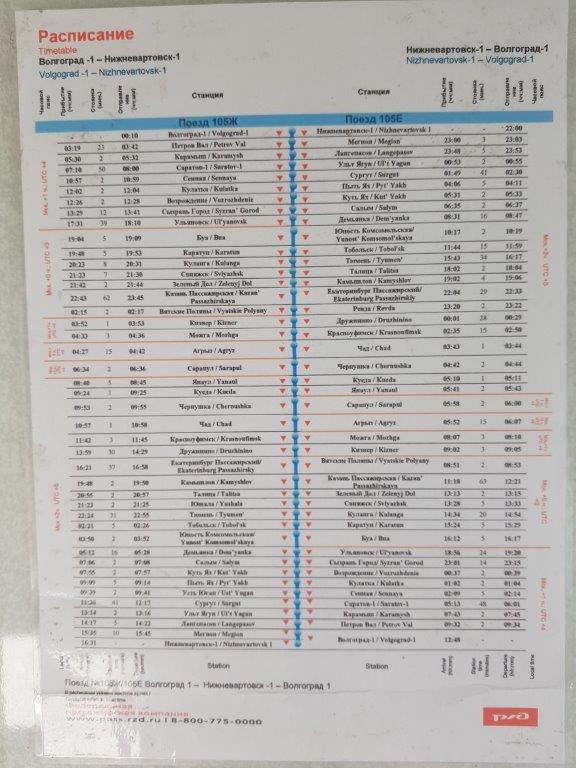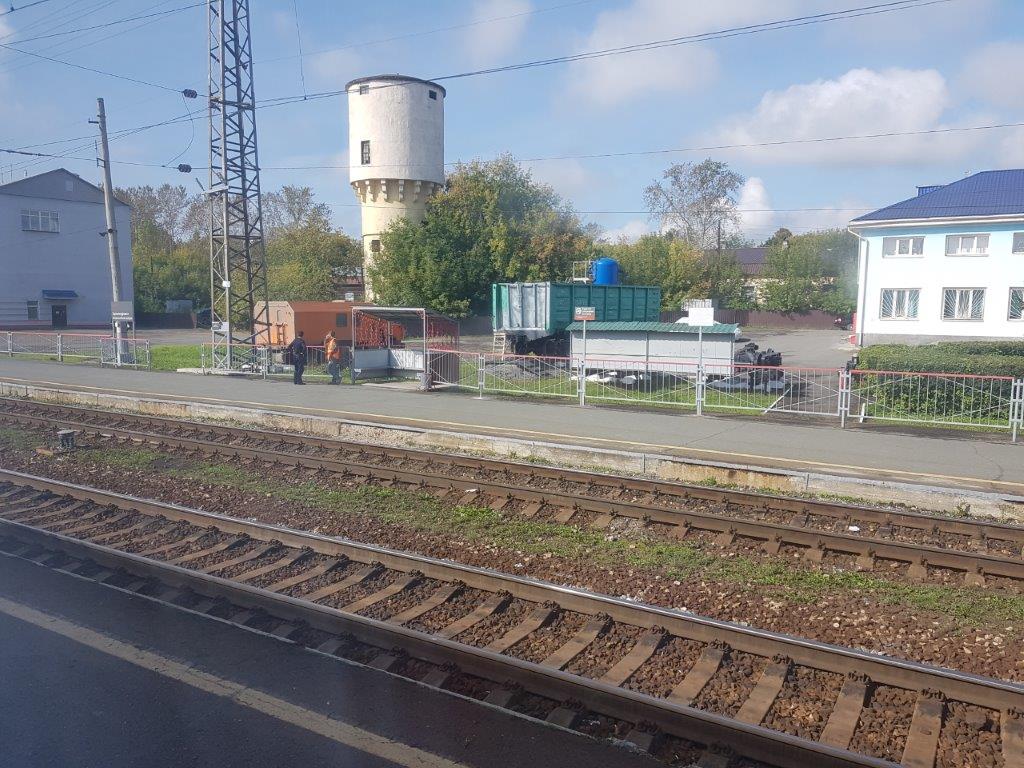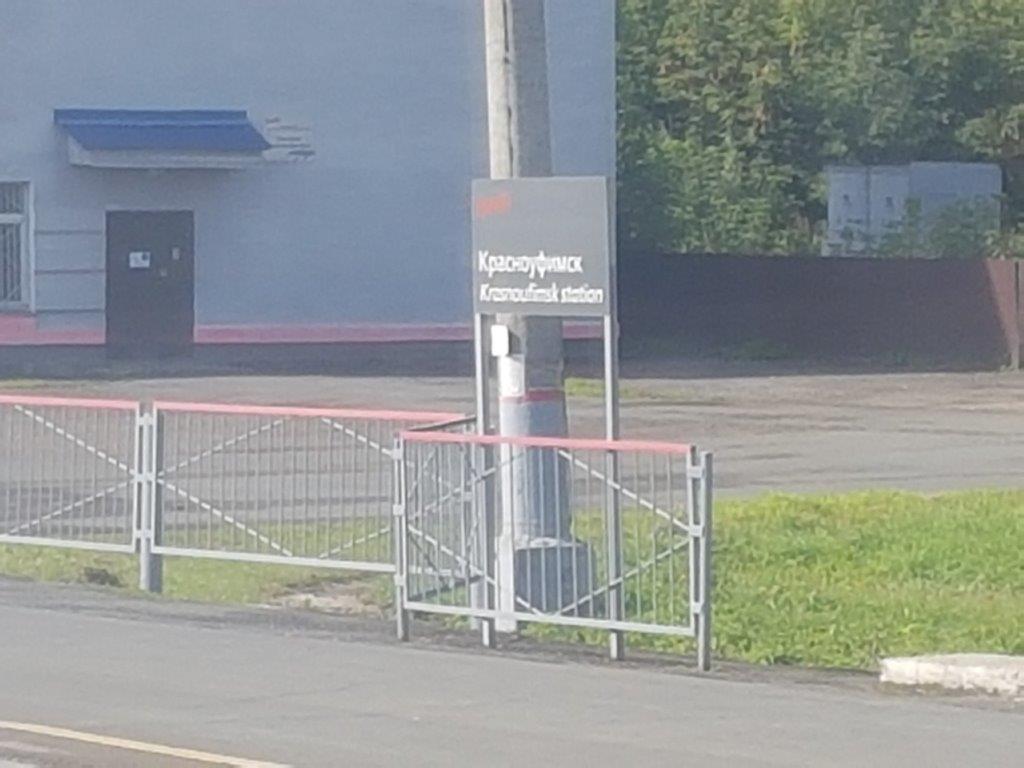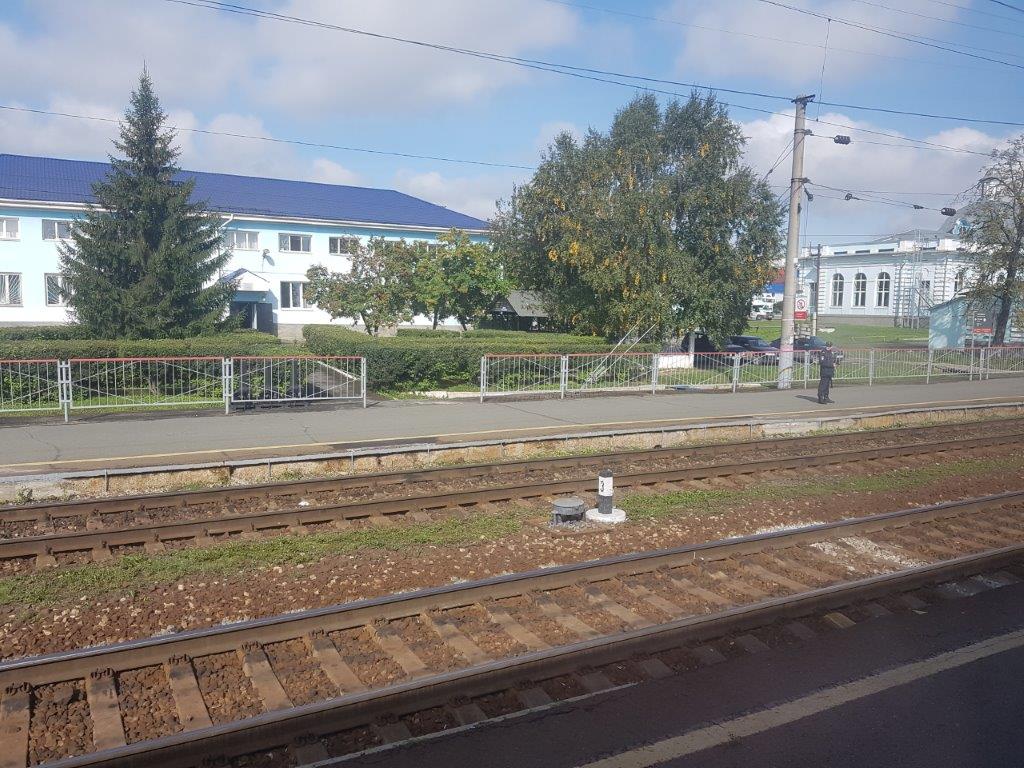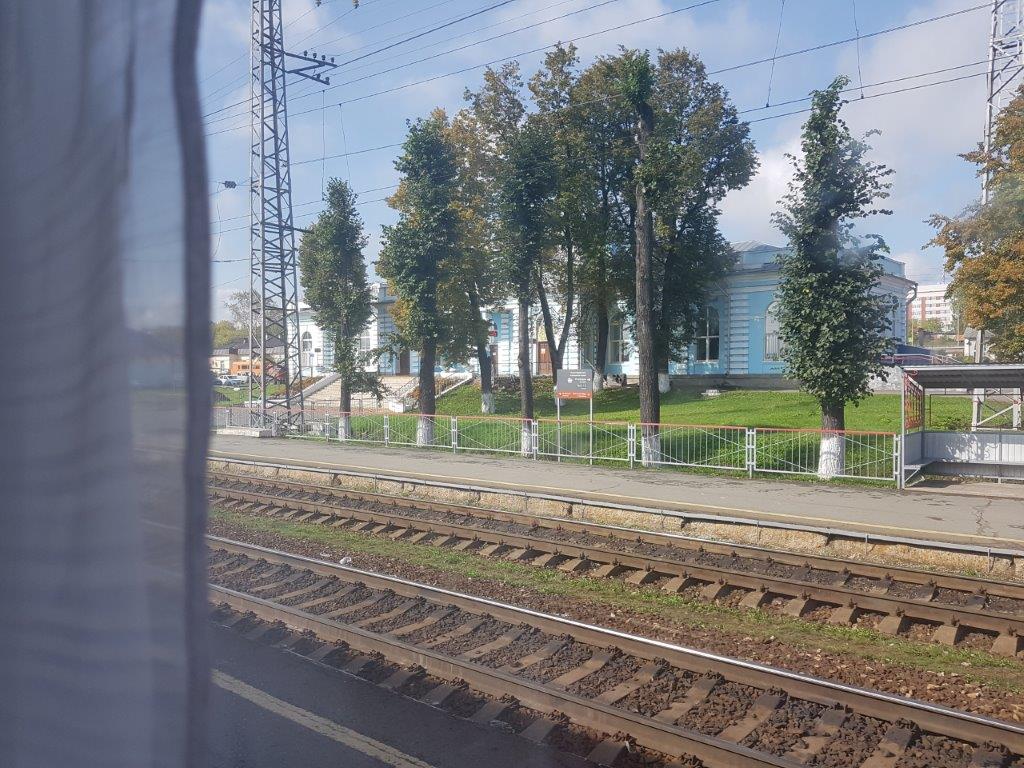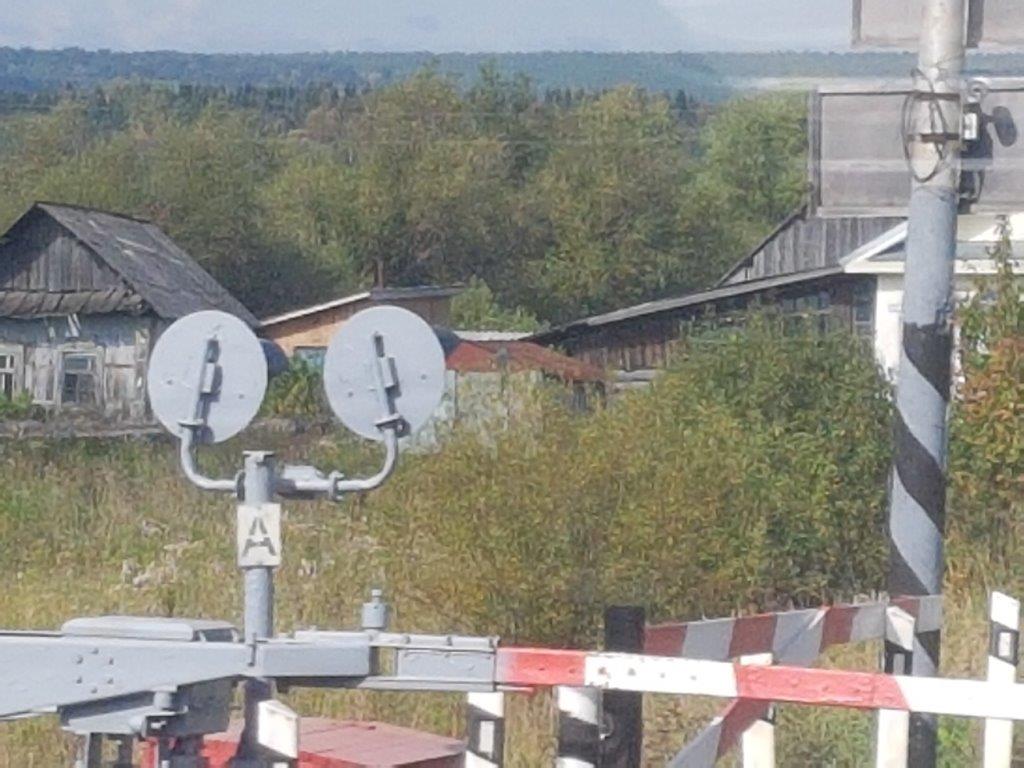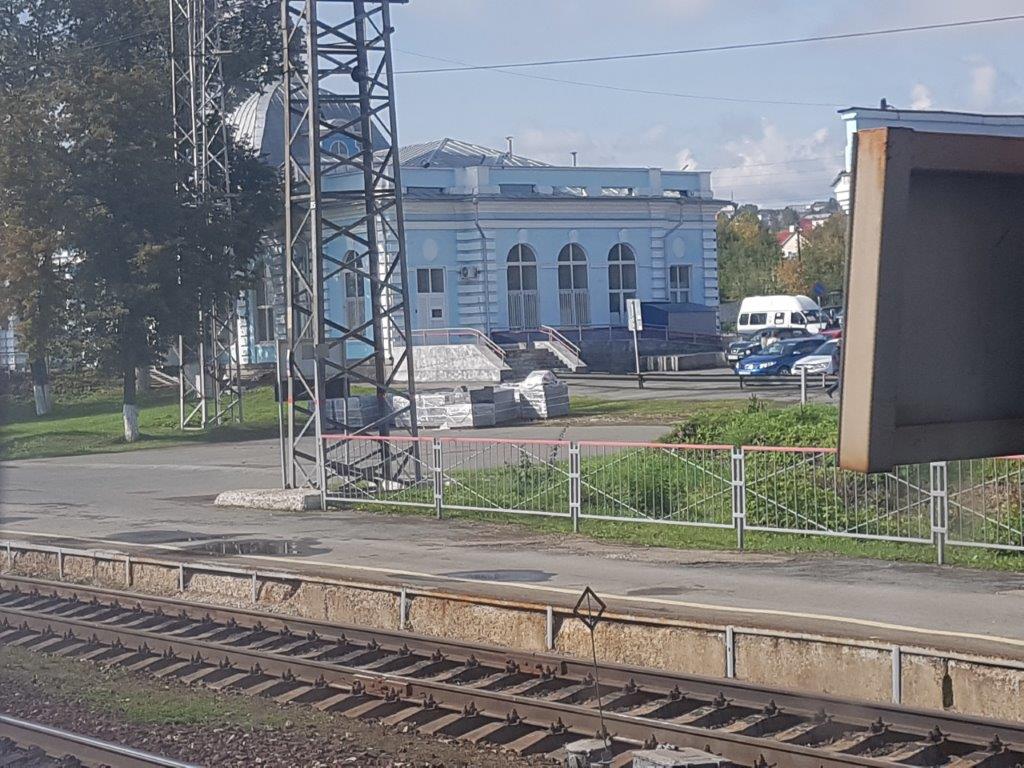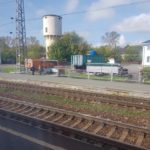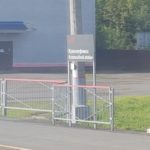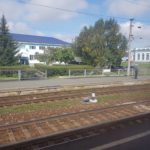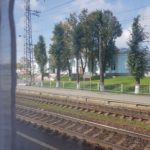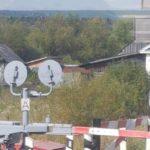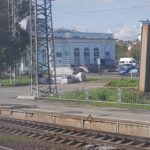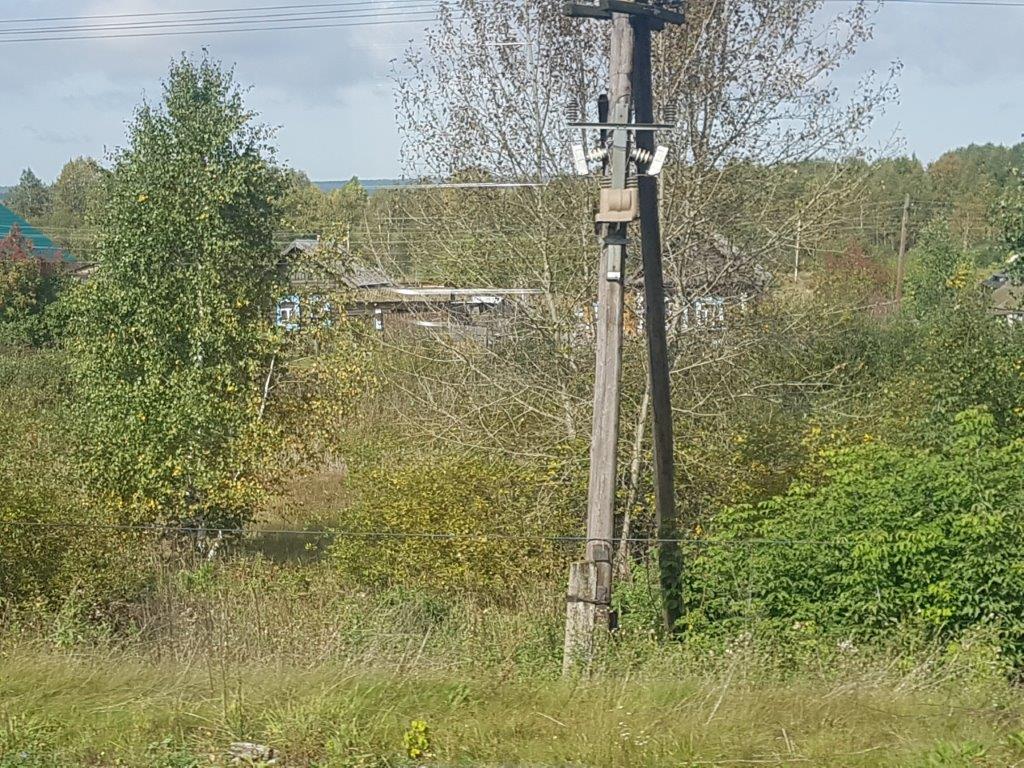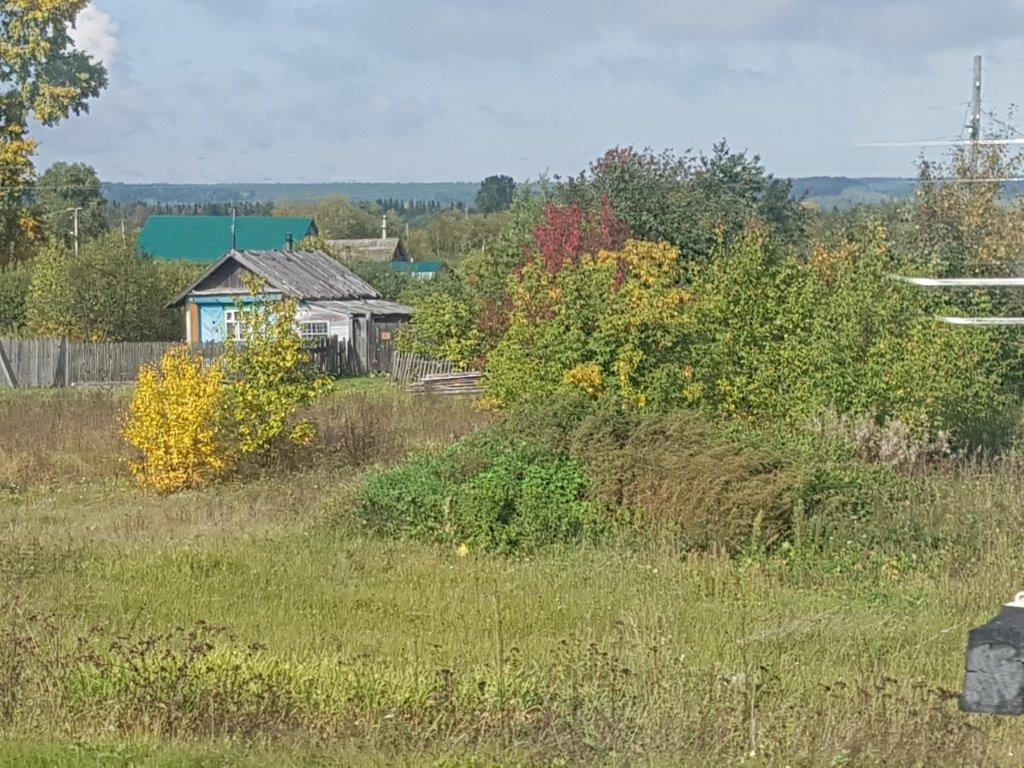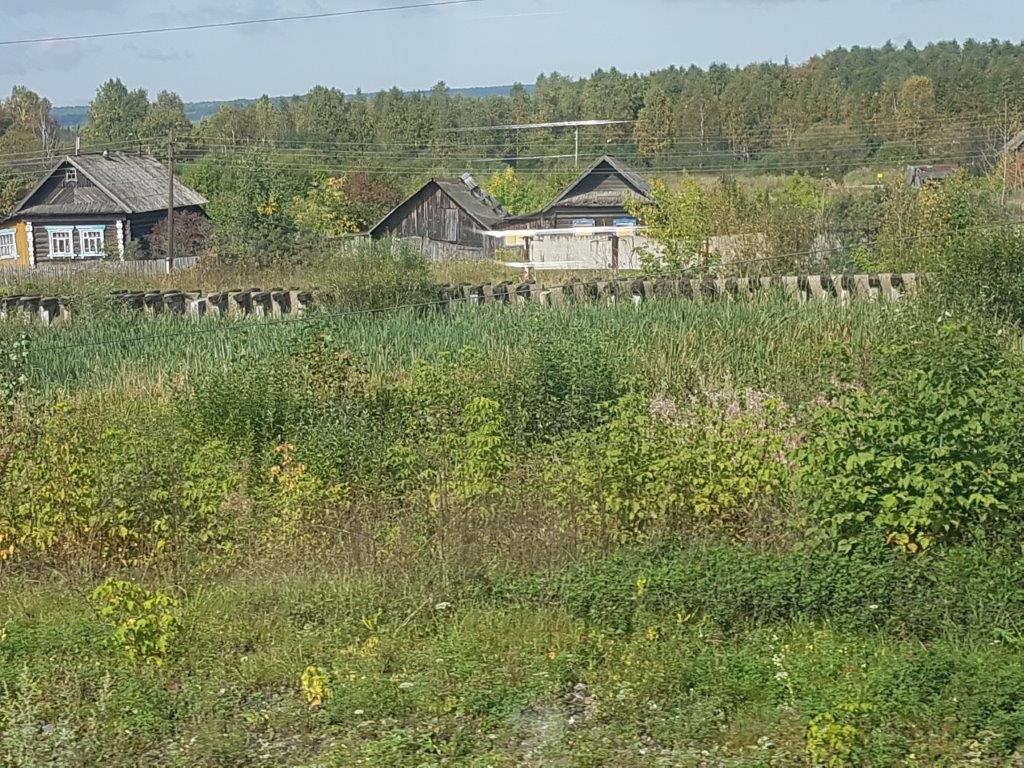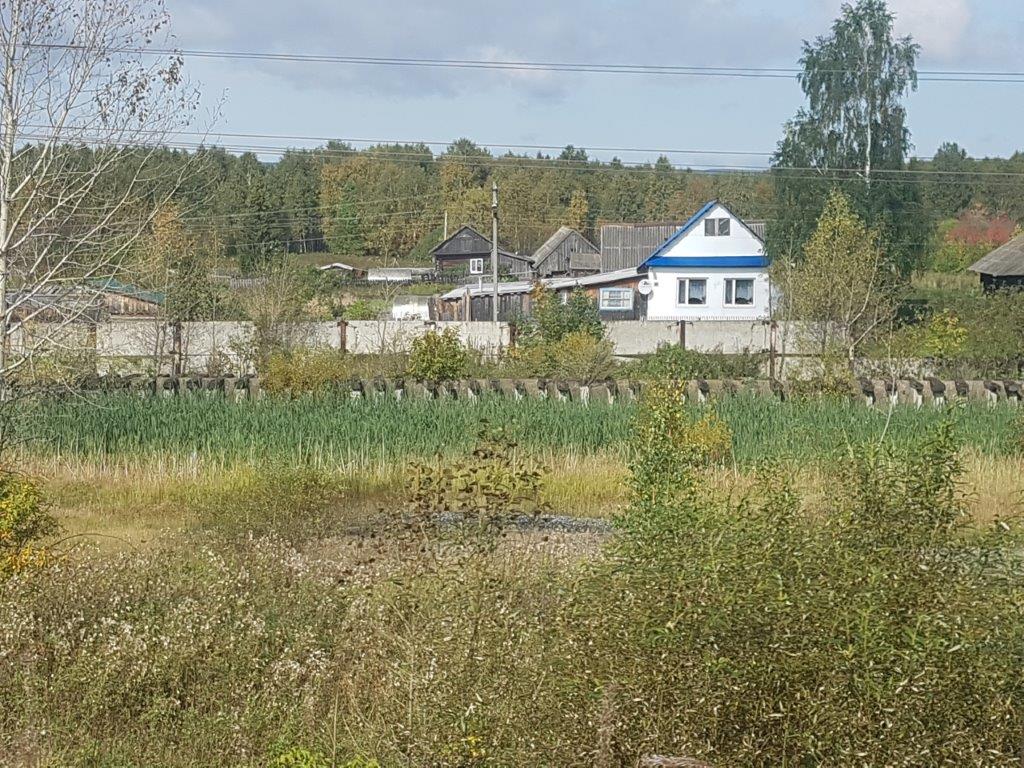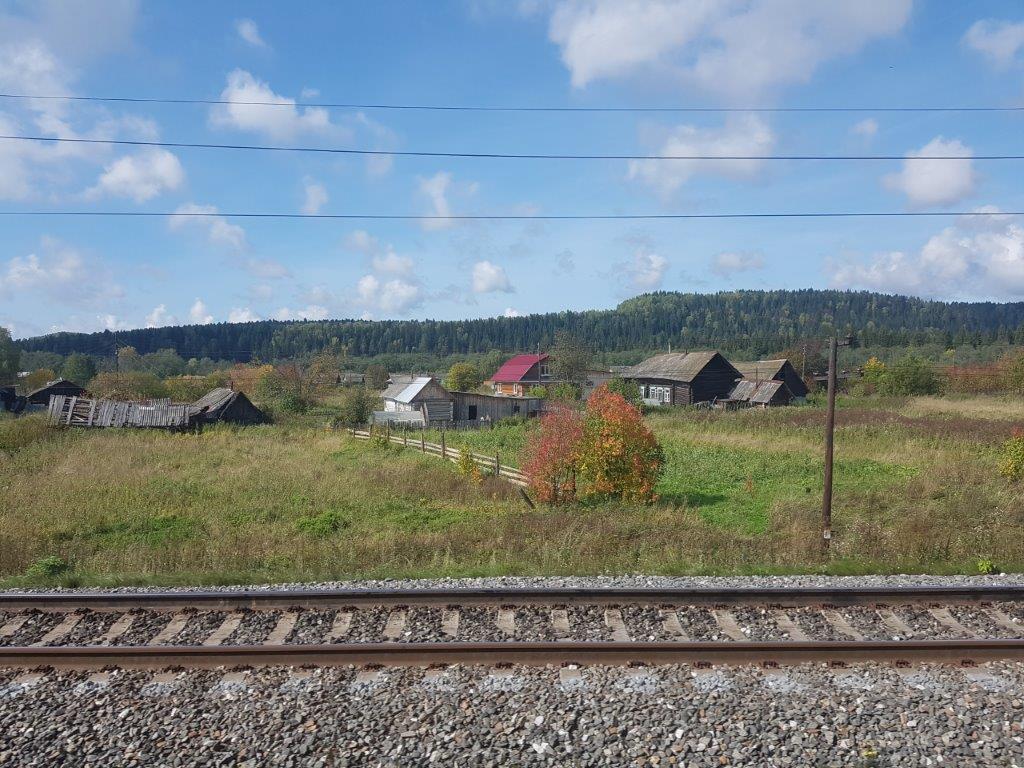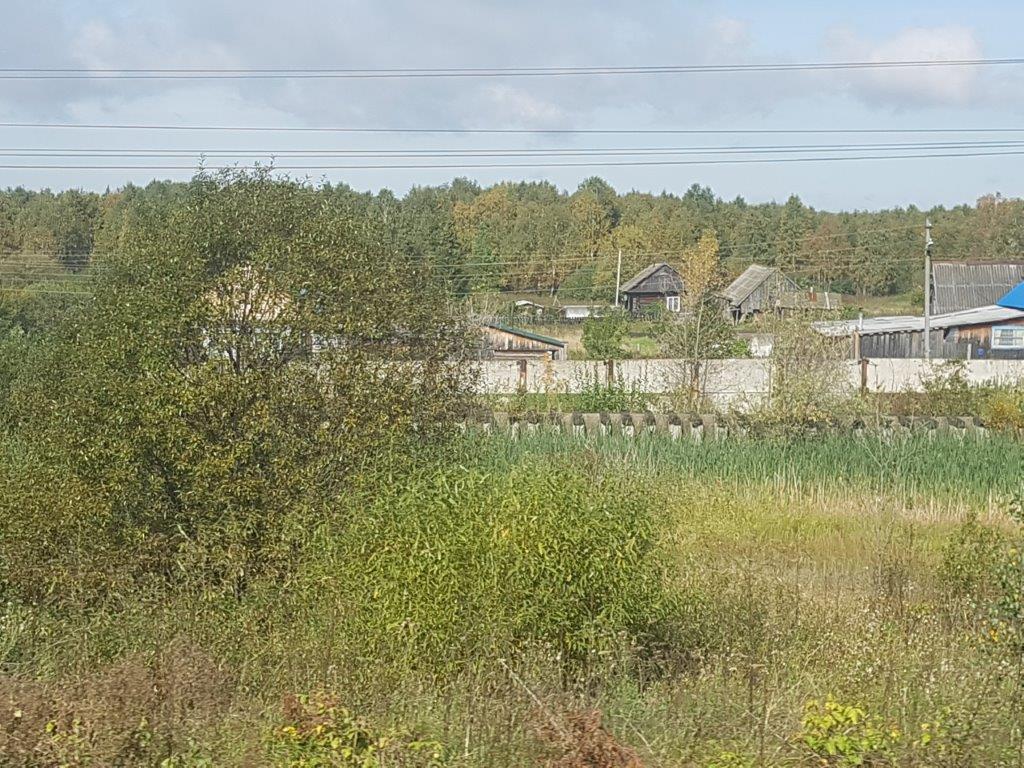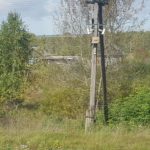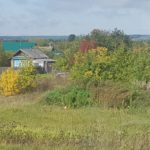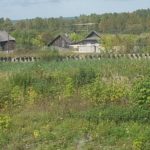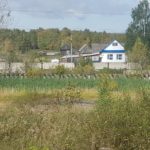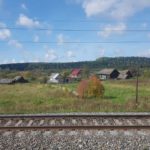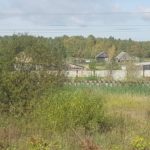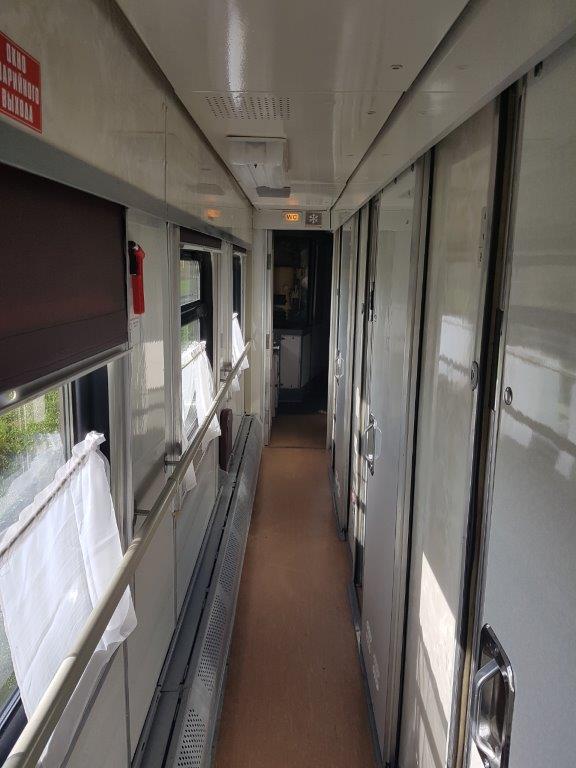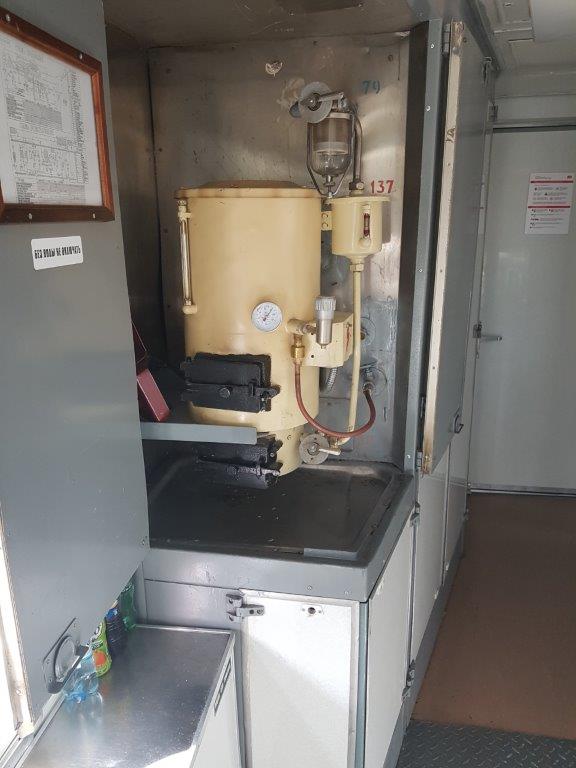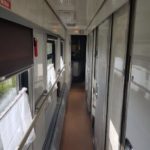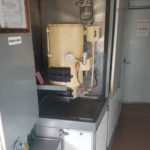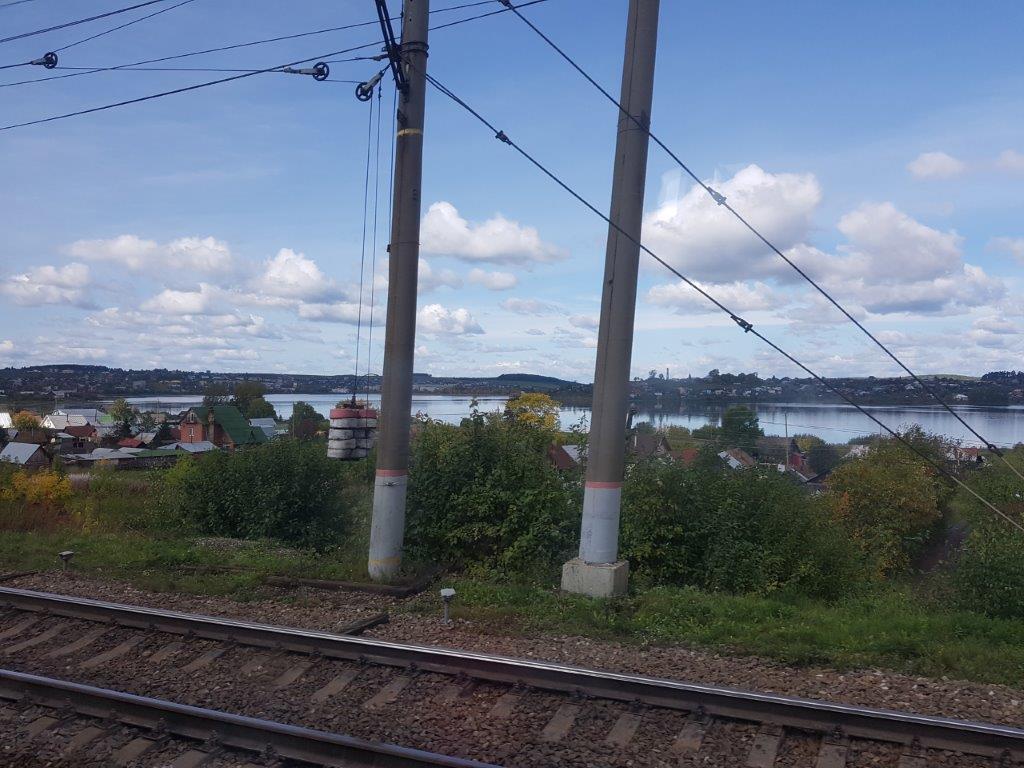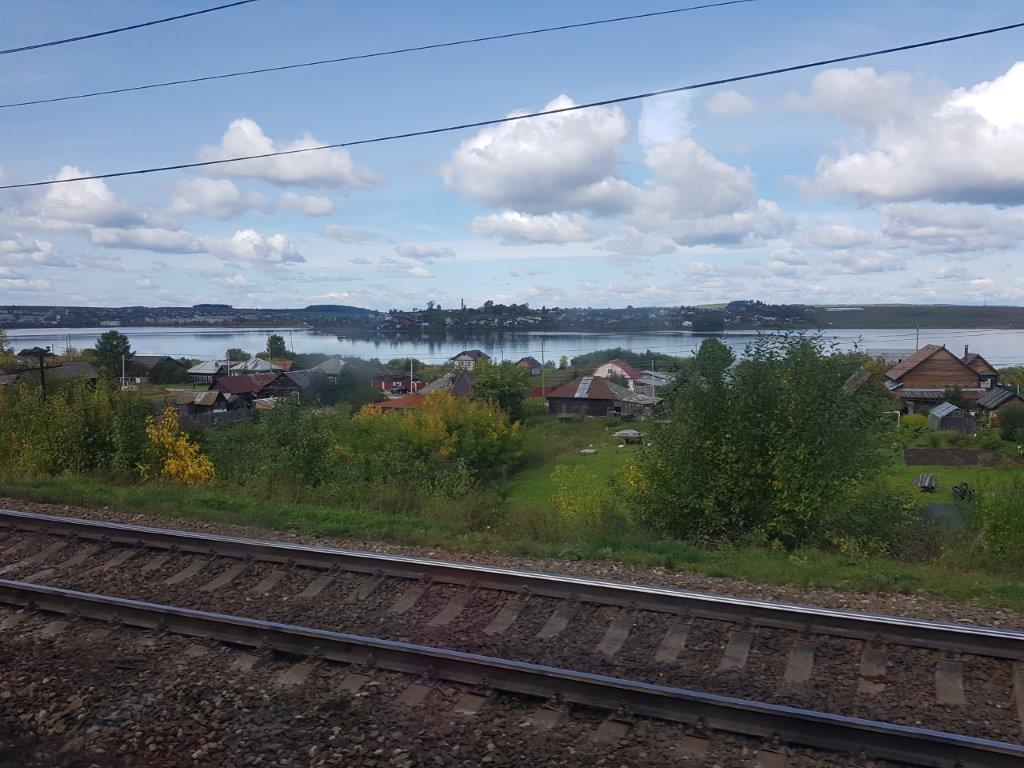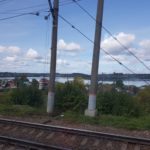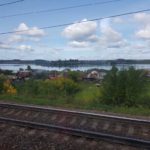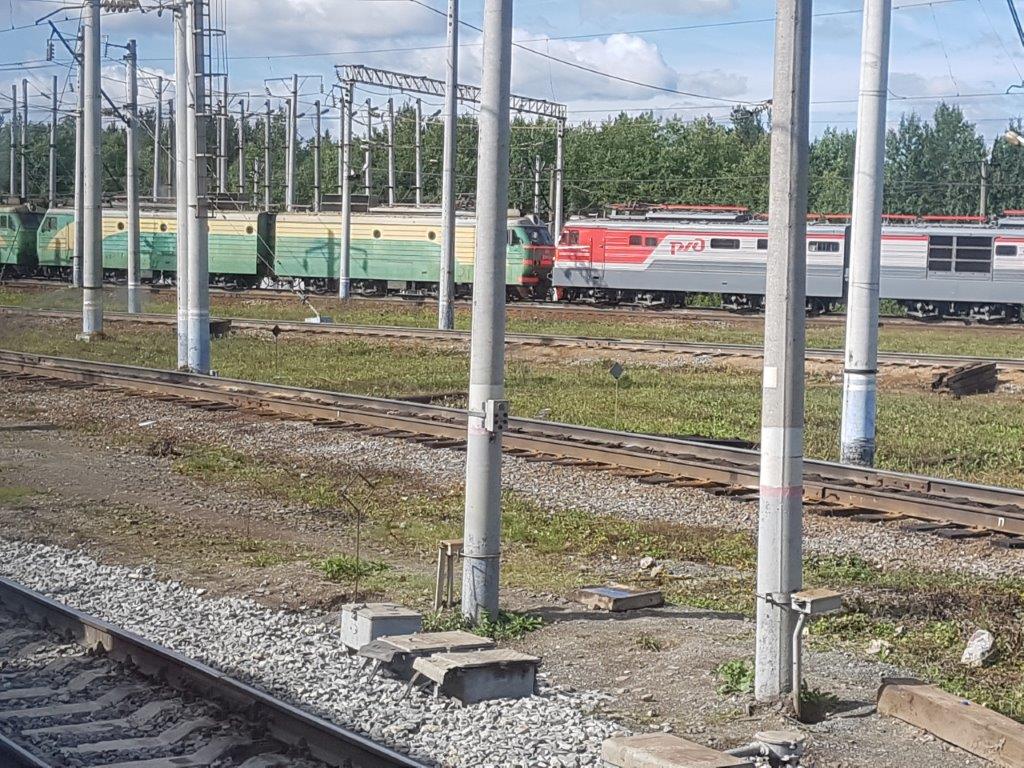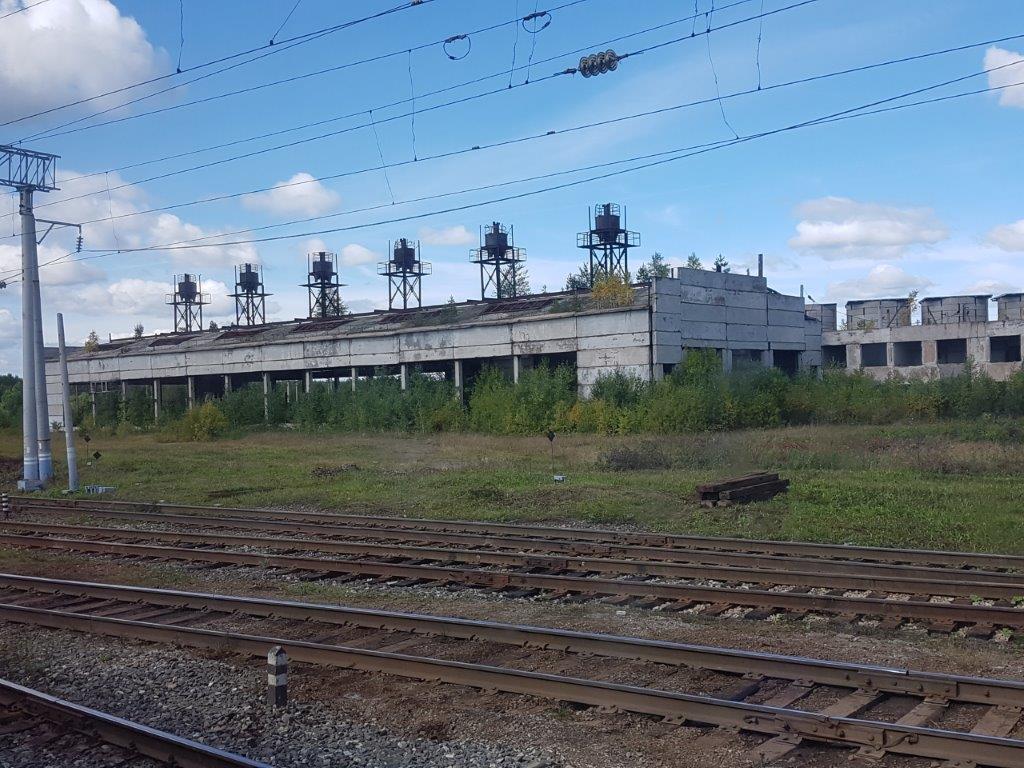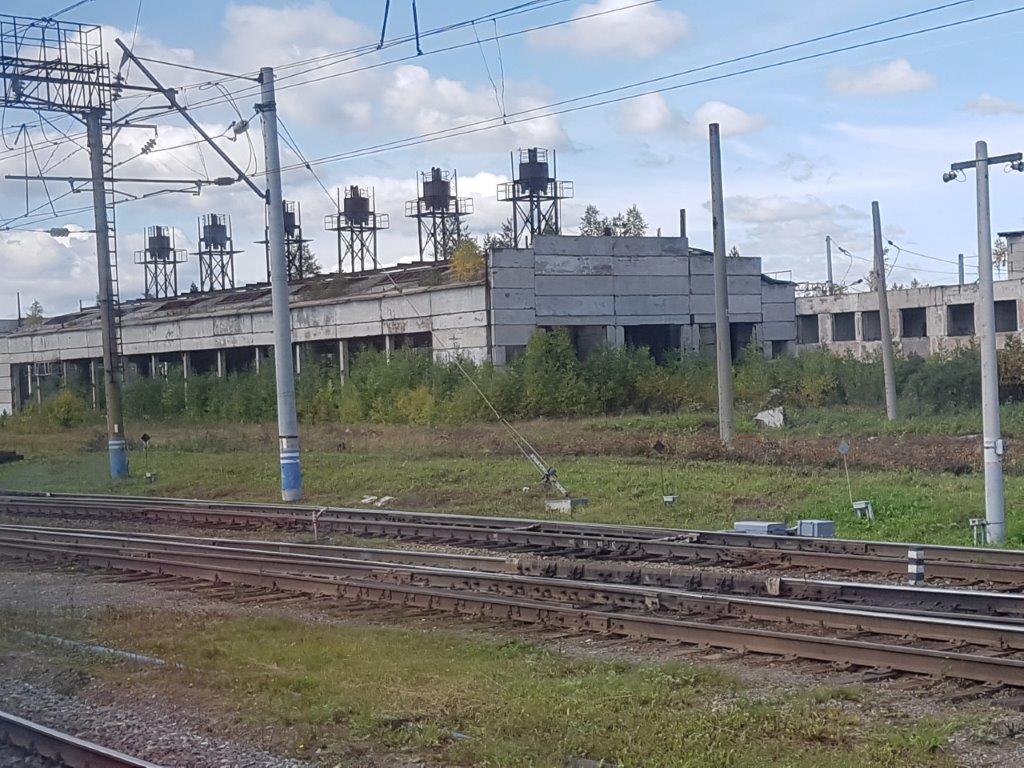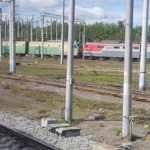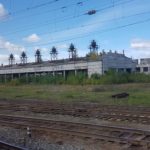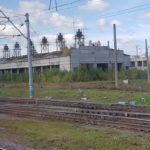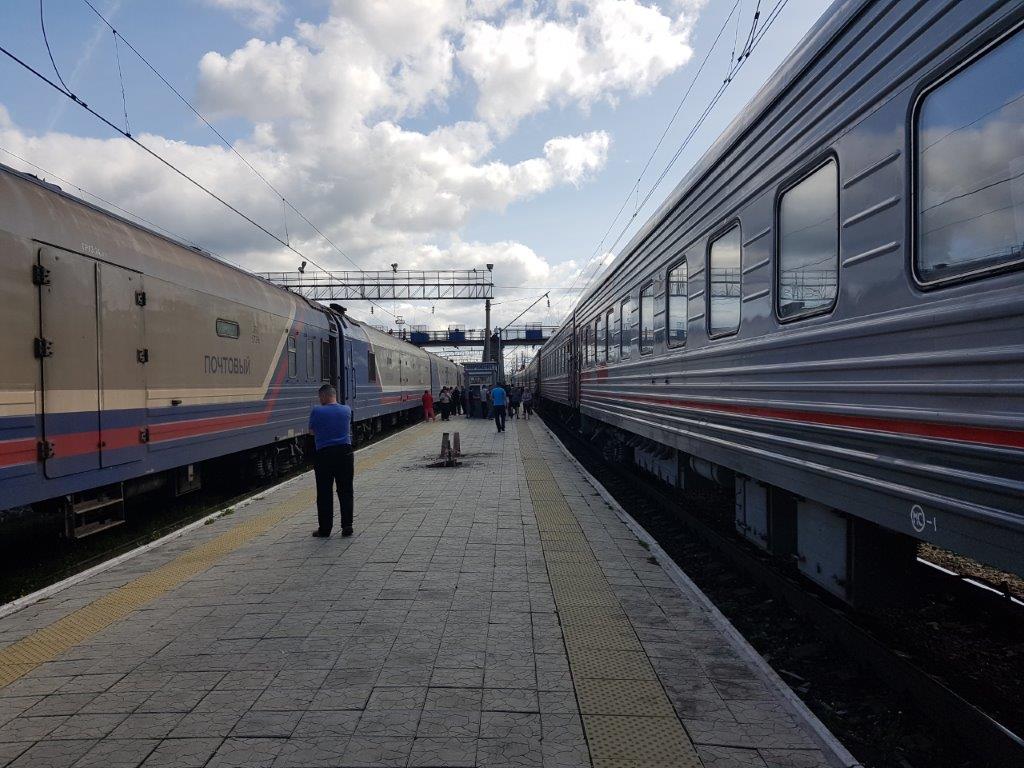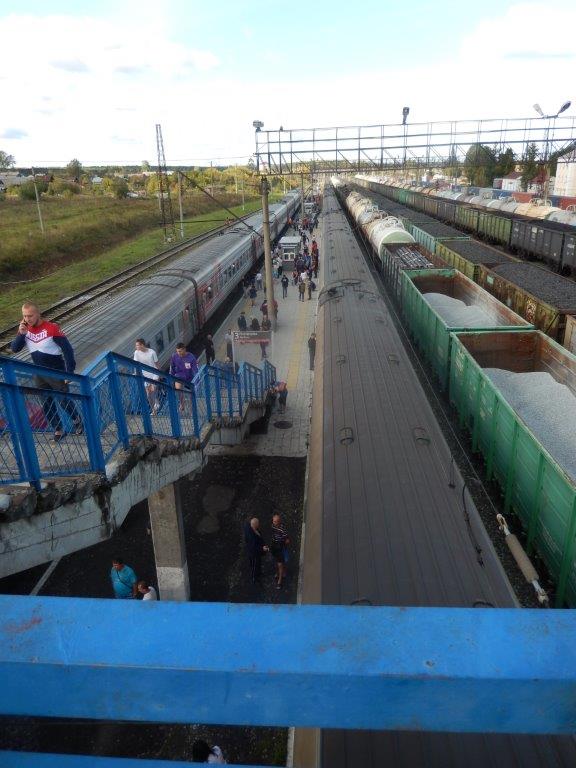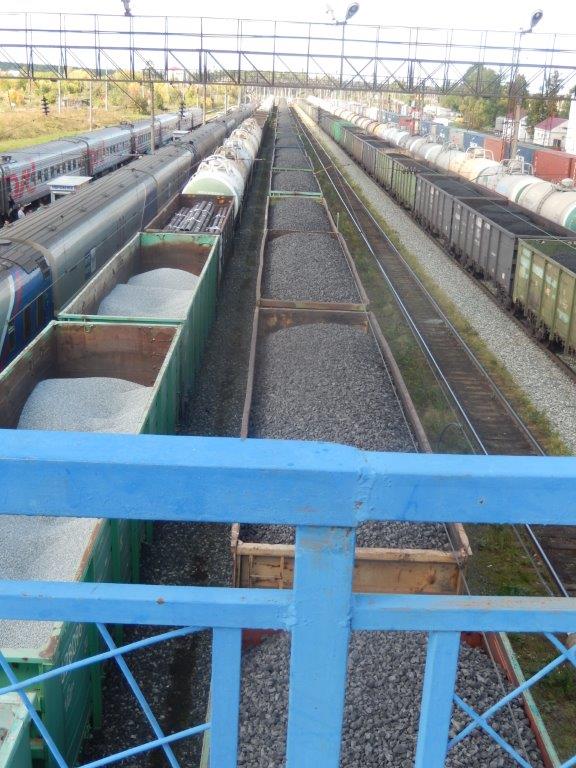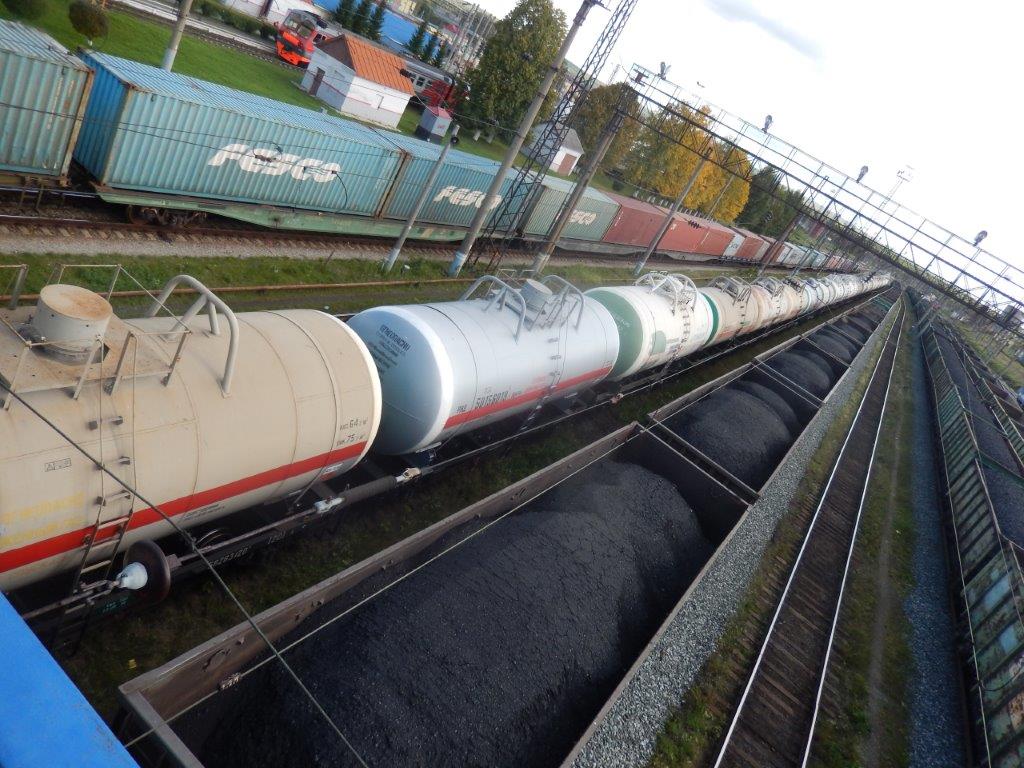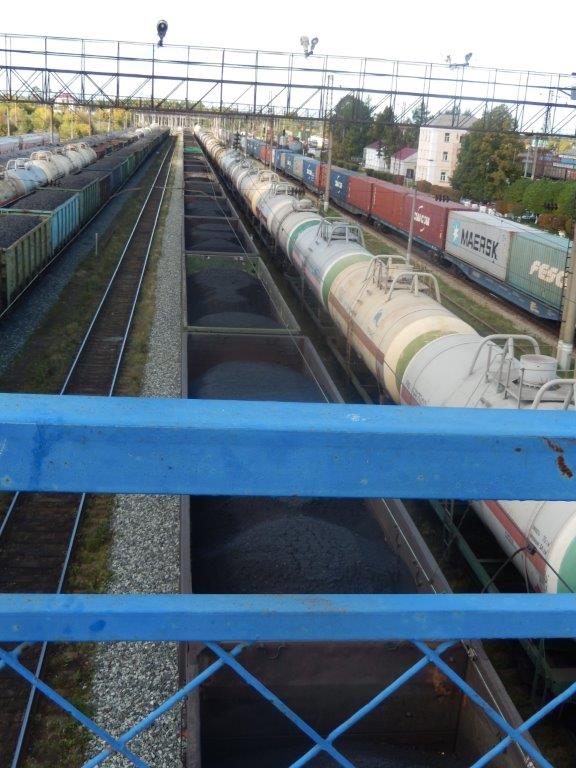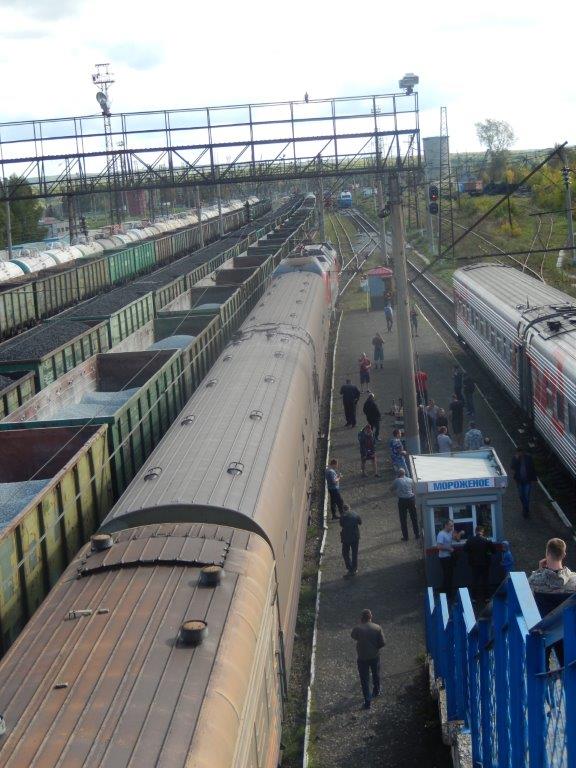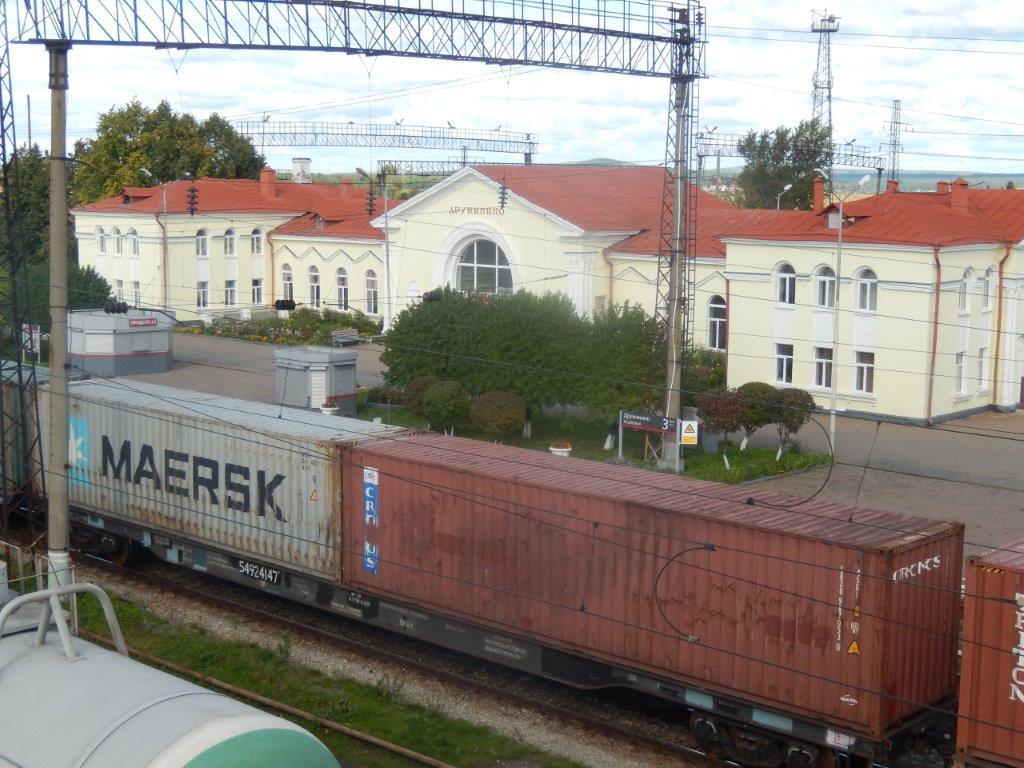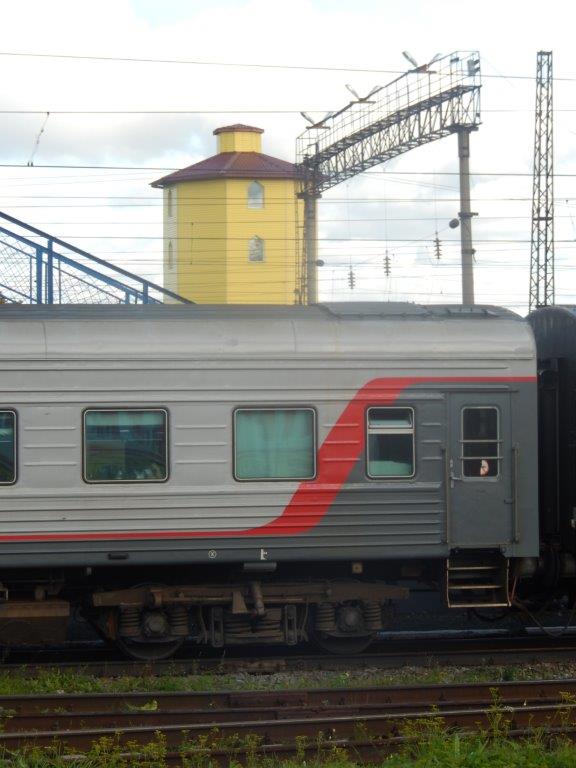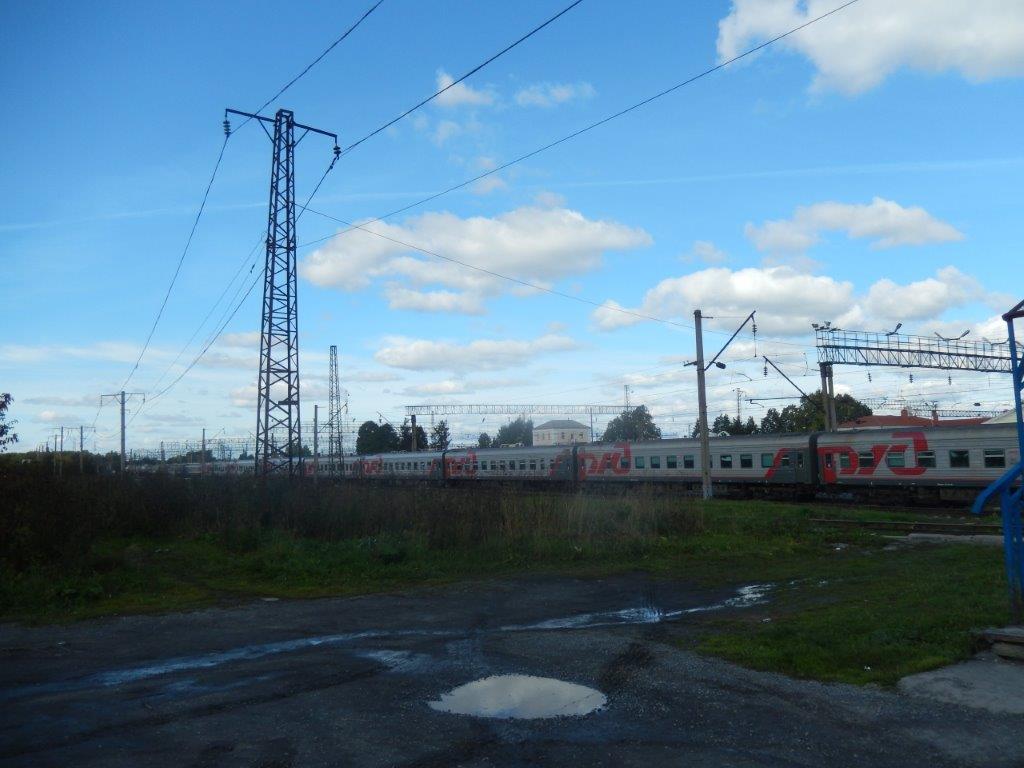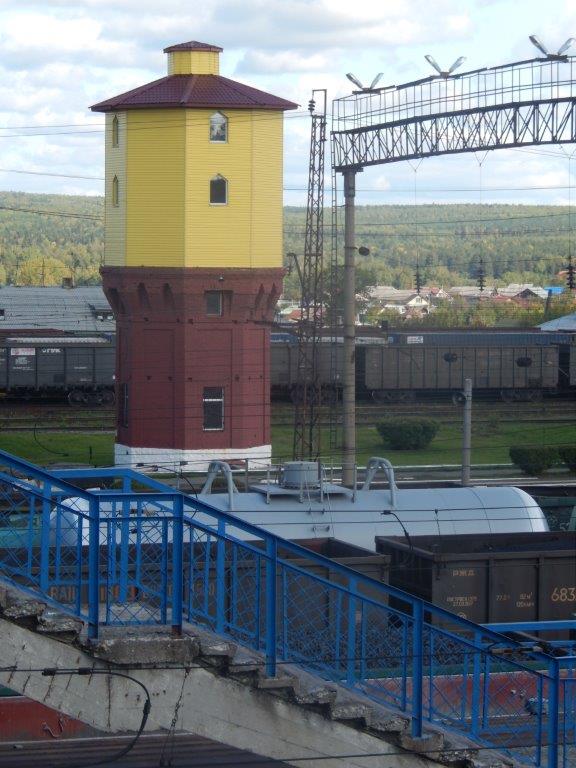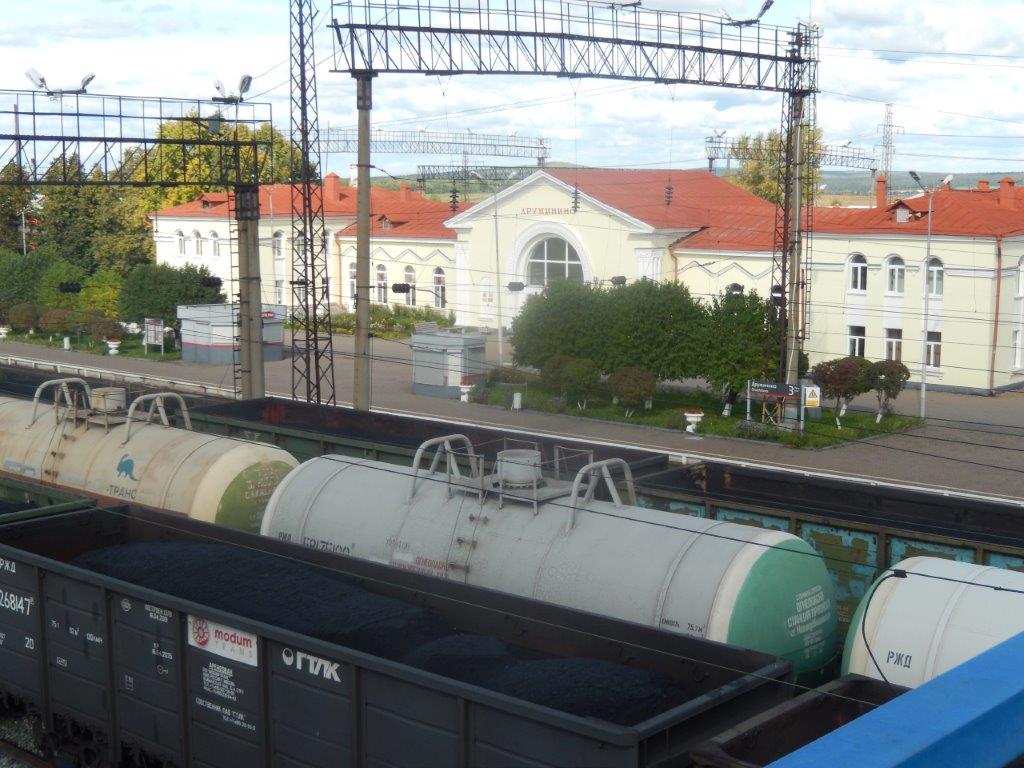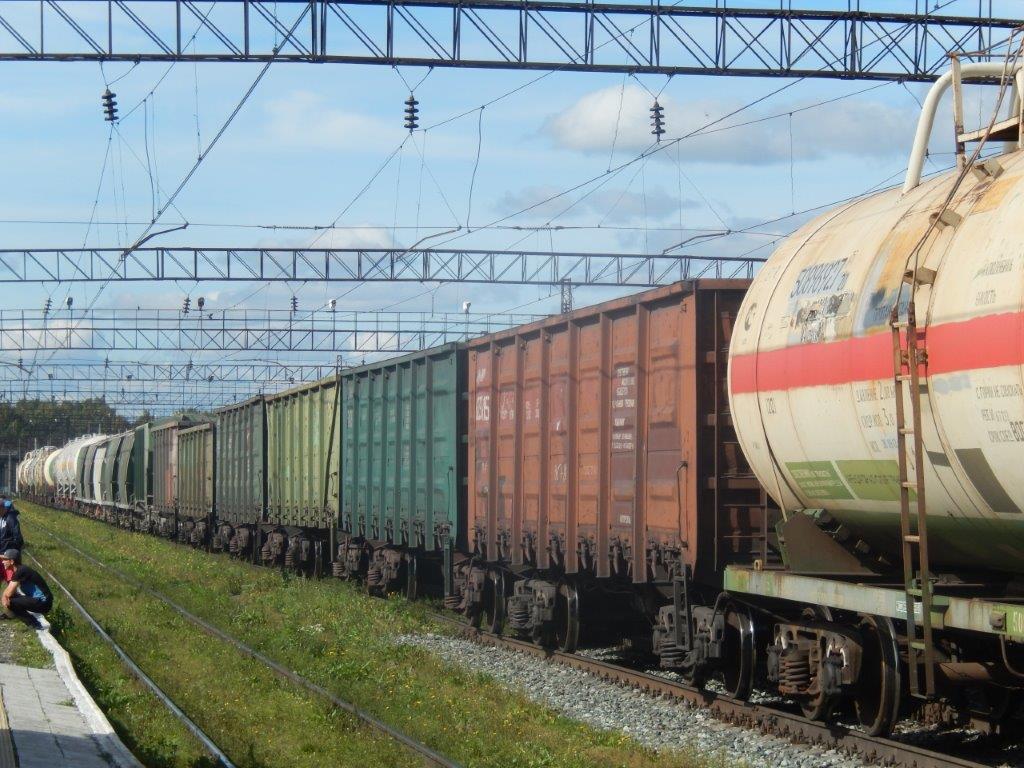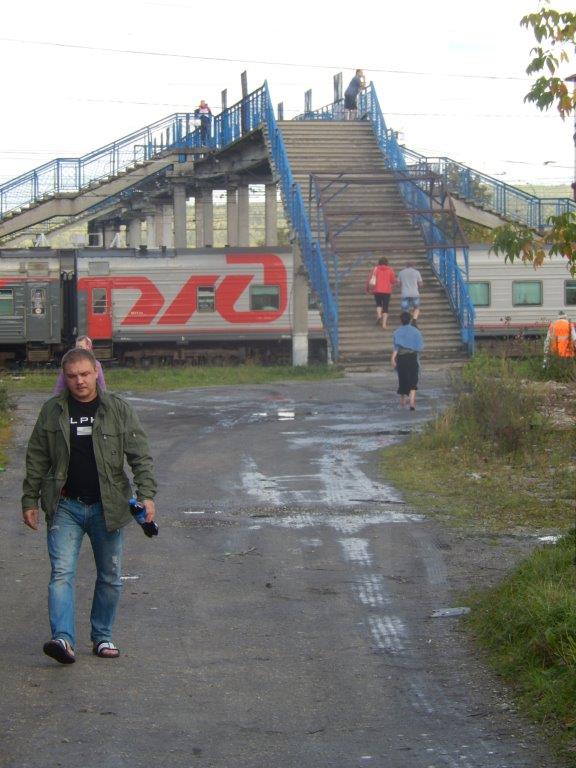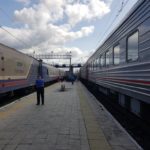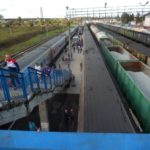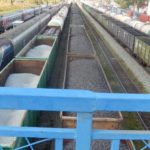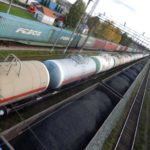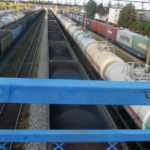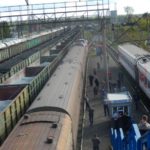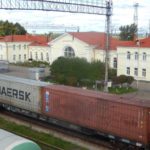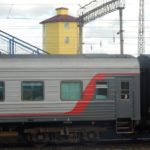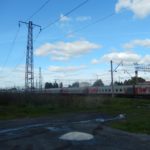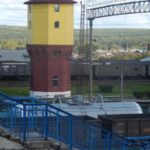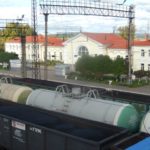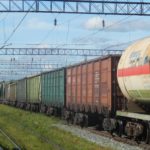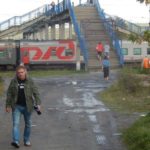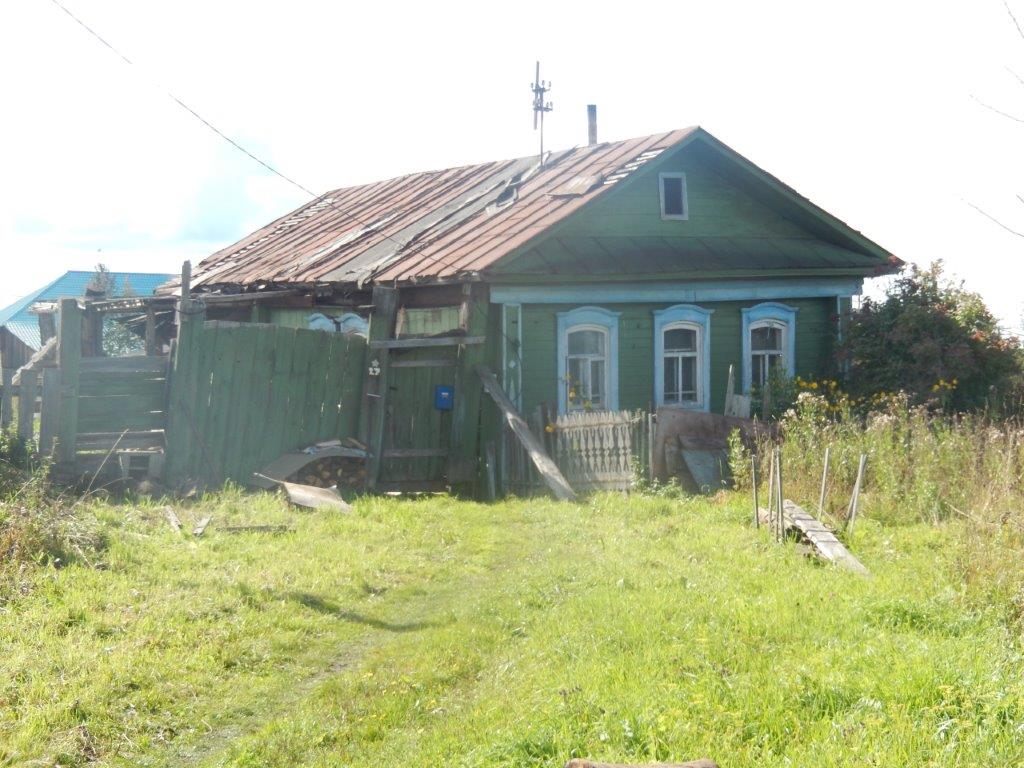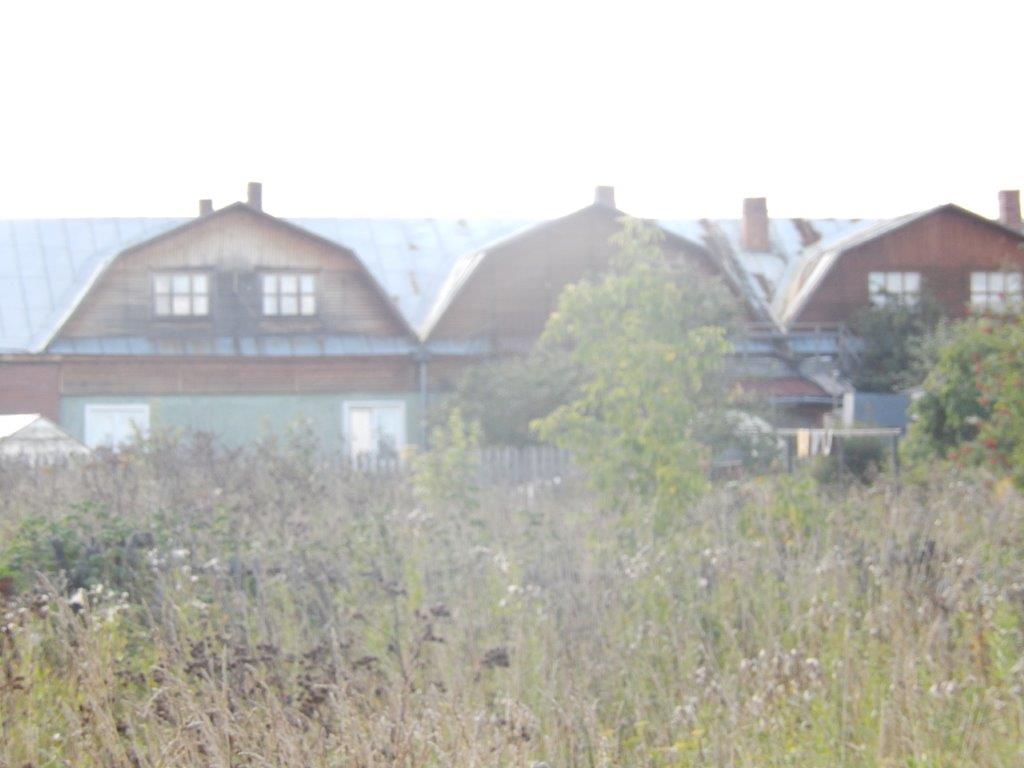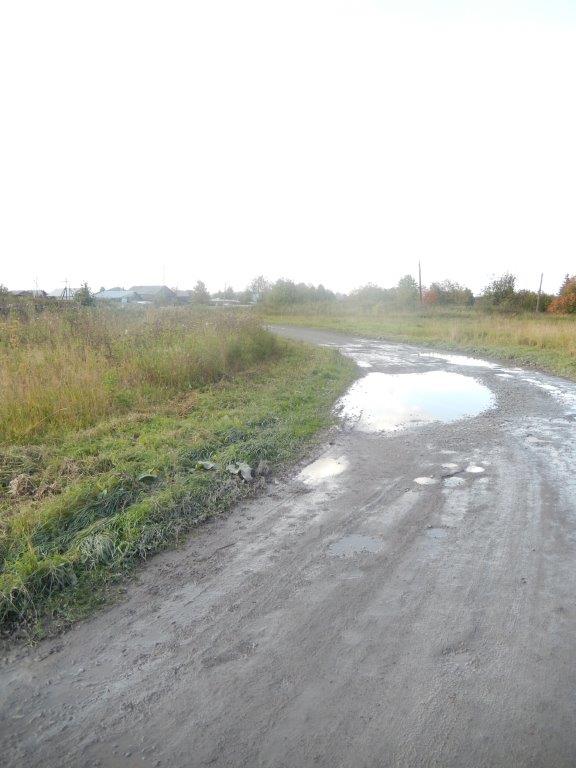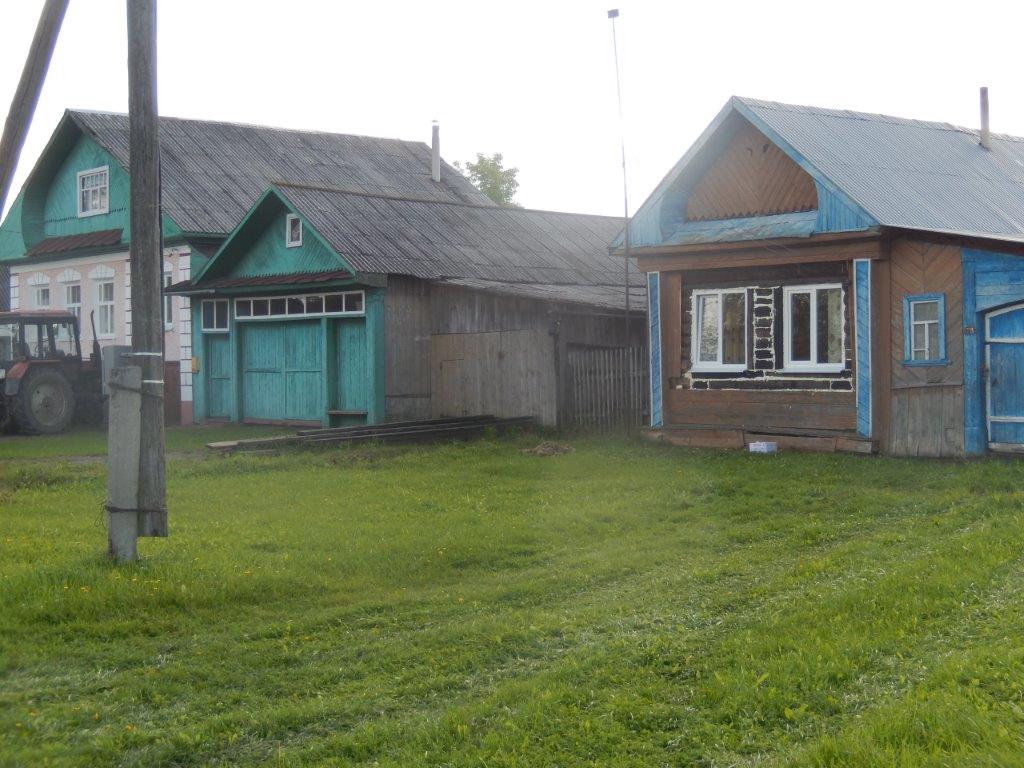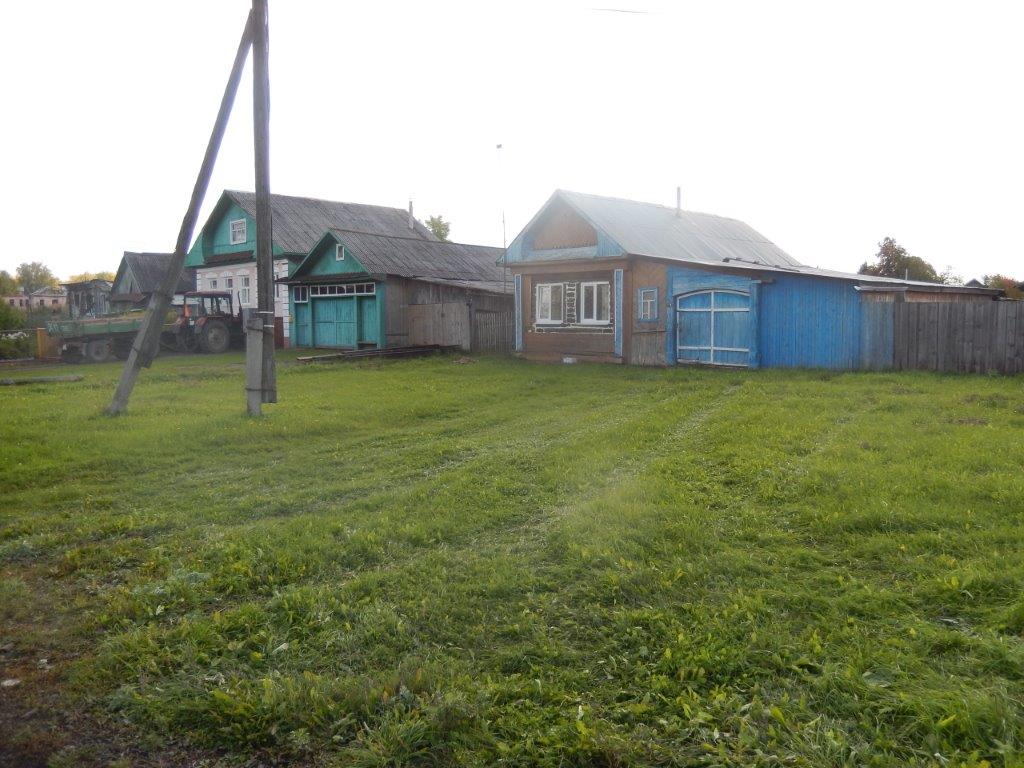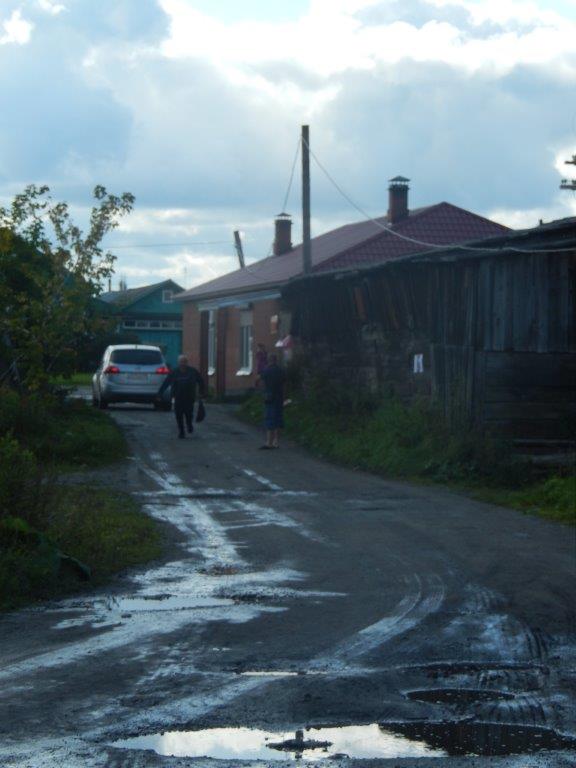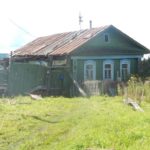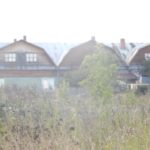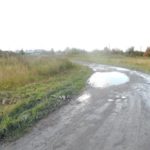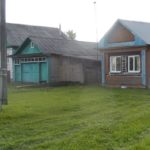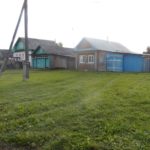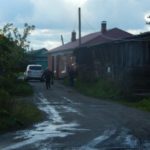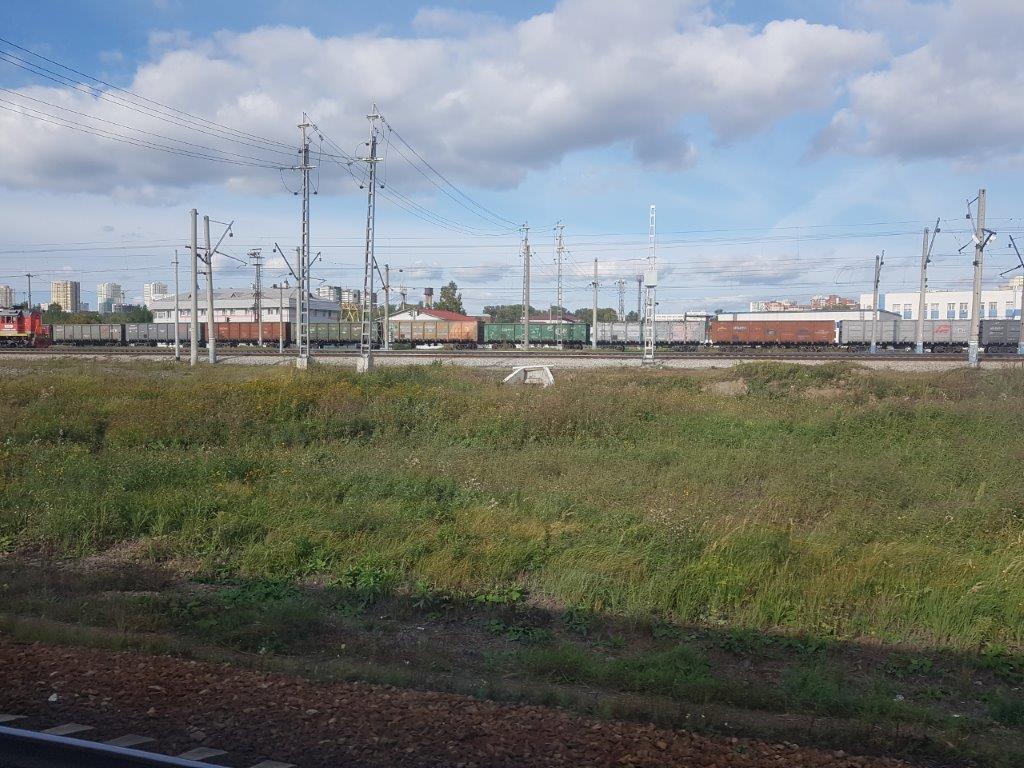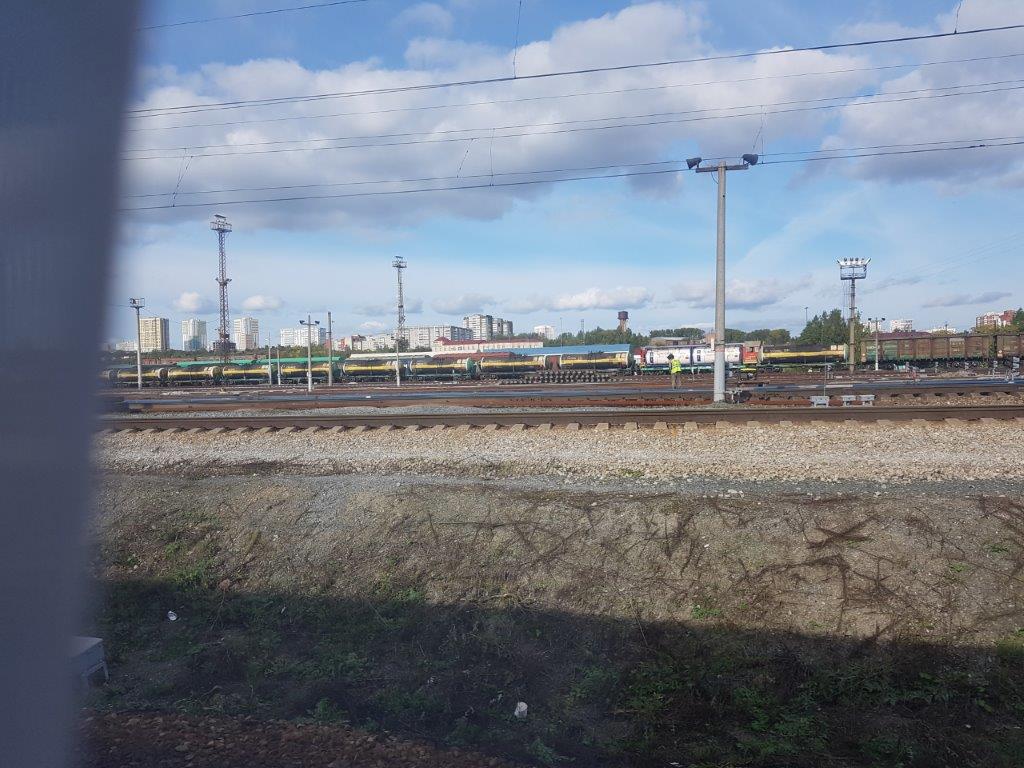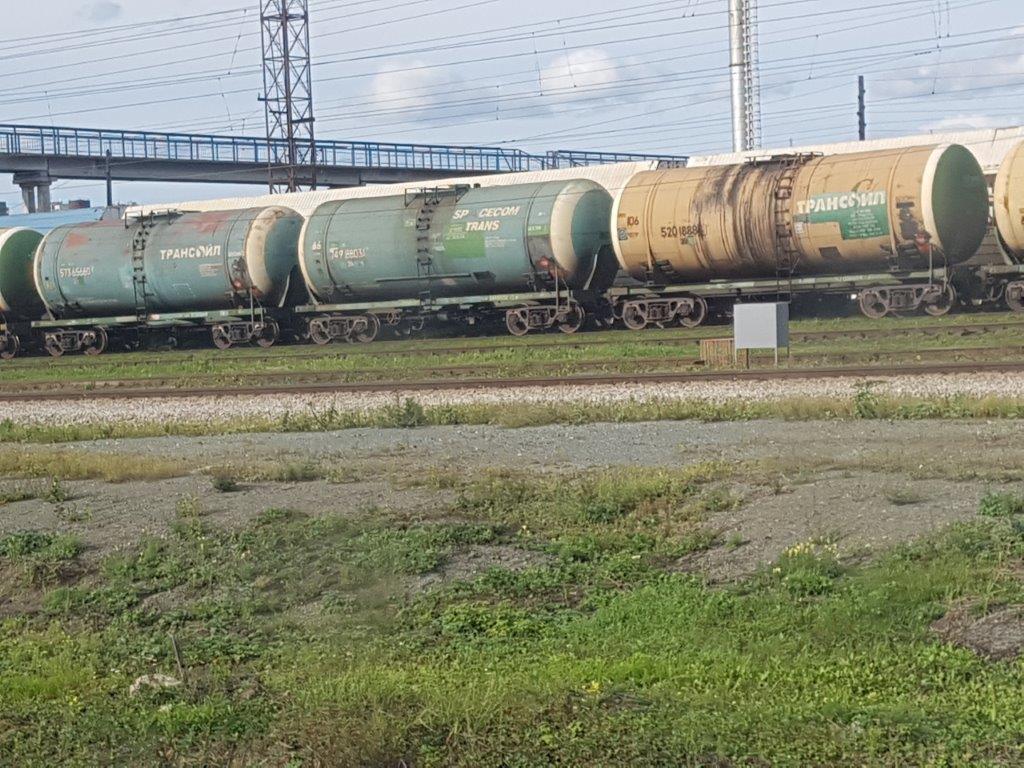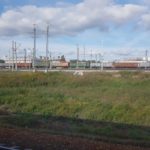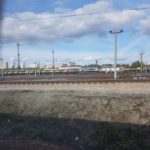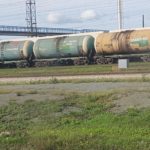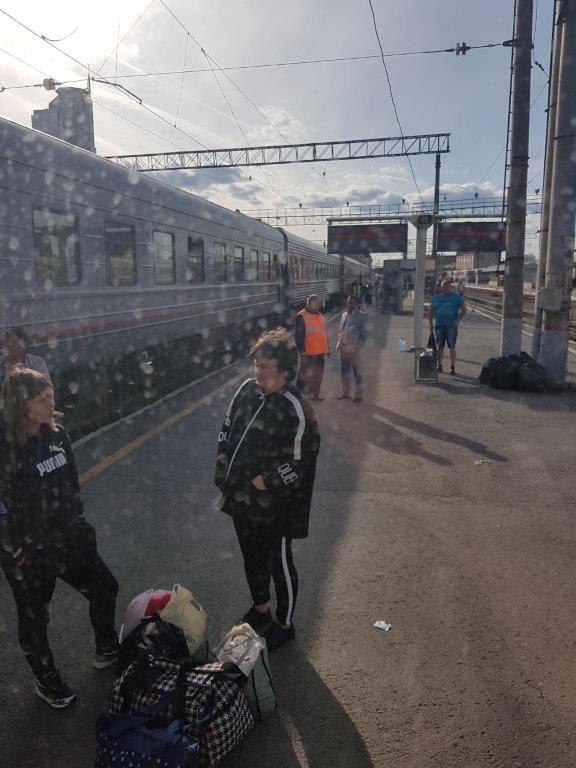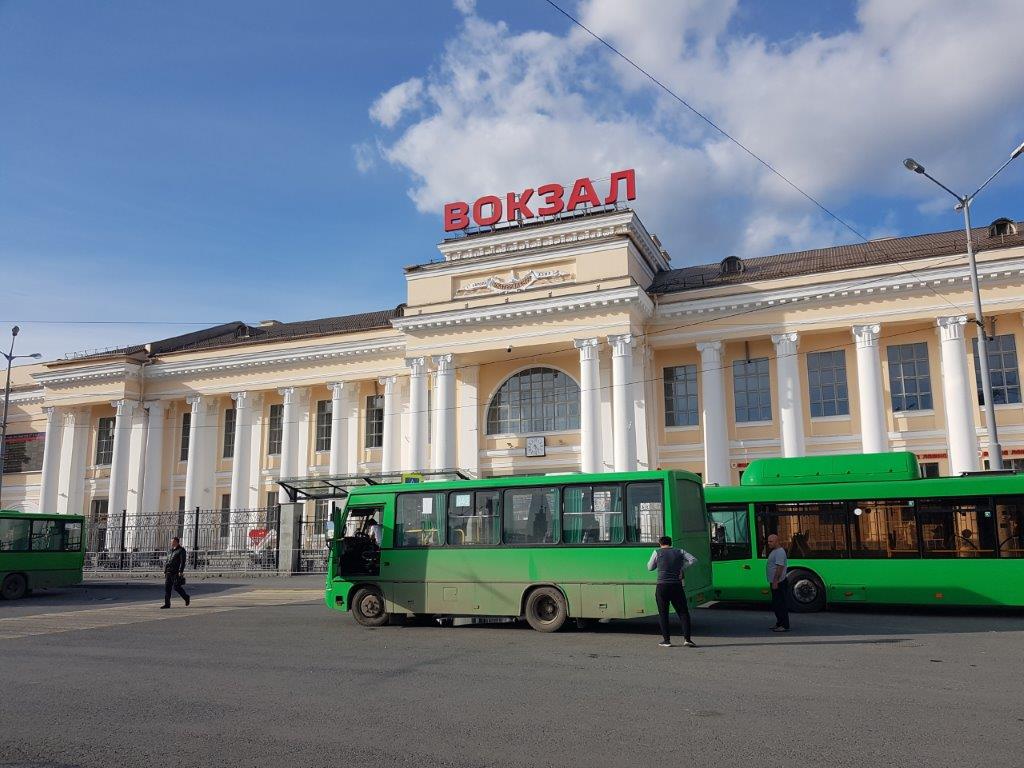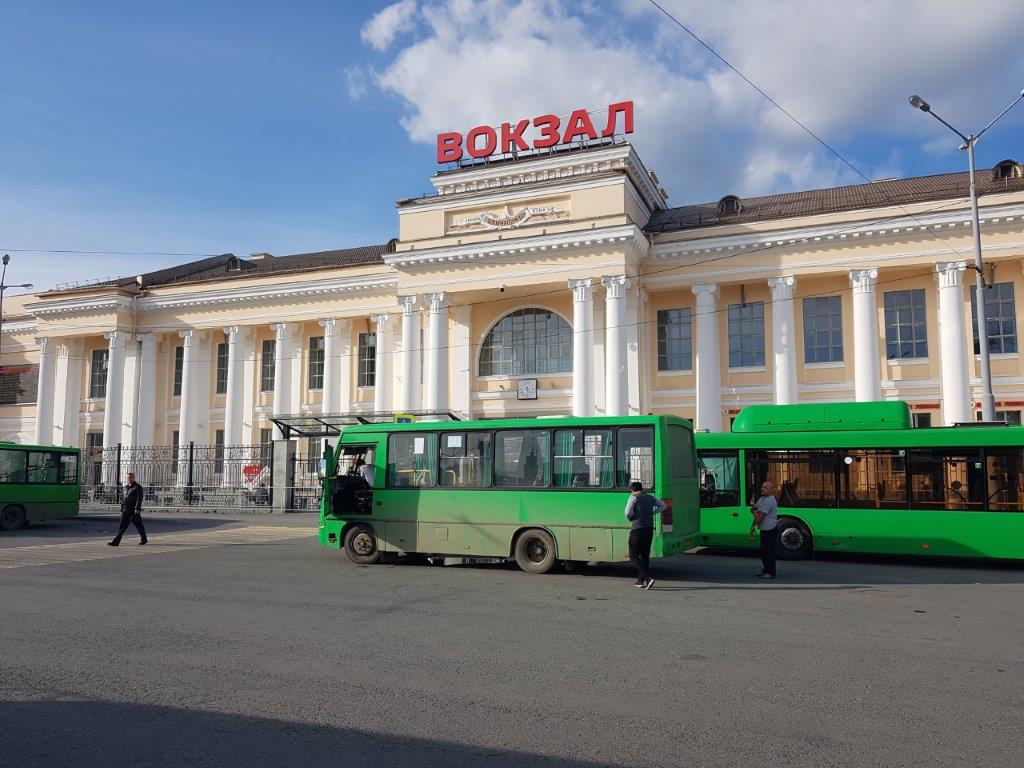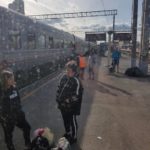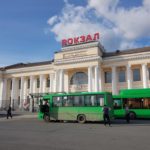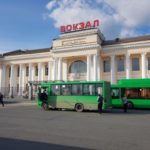The railroad through the Urals into Asia to Yekaterinburg/Jekaterinenburg
Departure from Kazan Railway Station
After a day full of history and loads of impressions The Wandelgek left Kazan but I’m sure he did leave a bit of his heart there. The city had been a treat. It had beautiful architecture and there were lots of local stories to remember and it had left a positive impression just like Moscow (and Saint Petersburg) had done. But the train does not wait for lingering travellers so it was time to say goodbye and board the Ural line branch of the Trans Siberian Express for the next section towards Yekaterinburg/Jekaterinenburg. This city was located just accross the border between Europe and Asia and also just accross the Ural mountains. I will tell more about Yekaterinburg/Jekaterinenburg in my upcoming blogpost.
In the train carriage we slept in compartments with 4 people. Two bottom beds and two top beds. The bottom beds could be converted to benches. The luggage is dropped underneath the benches and in a compartment above the door to the passage.
After installing it was time for a drink and then off to bed.
Itinerary: Kazan to Yekaterinburg
820km/510ml Kazan
1107km/688ml Argyz
1456km/905ml Krasnoufimsk
1777km/1104ml Europe / Asia border
Iset River
1816km/1128ml Yekaterinburg
Crossing European Russias eastern Taiga forests
The next morning, The Wandelgek awoke and after his eyes got used to the light inside, he peeked through the curtain and saw that the train had definitely left the city scape of Kazan. It now moved through an endless dense forest. The 1st few hours the land was flat and covered with endless trees, but after a while the flat land got gradually less flat and was replaced by rolling hills covered with… endless trees…
This was a sign that the train got closer to the Ural mountains and The Wandelgek expected to see large snow covered mountains in the distance soon…
But that did not happen. At the best the rolling hills grew a bit higher.
The Wandelgek checked google maps for this when he returned home.
Quite often while filming, a train would pass by and it turned out to be quite a psychedelic effect ??
Between the trees were small villages of which The Wandelgek wondered who would live there and how different their lives must be from his or even from the city people living in Saint Petersburg or in Moscow…
The train now entered the pre Urals and there were 2 stops planned in the Ural “mountains”.
Crossing the Ural mountains into Asia
The Trans Siberian Express was actually moving through one of the lowest parts of the Ural mountains to reach Yekaterinburg/Jekaterinenburg. The high parts were far more north and a bit to the south was also a more elavated part. So no real mountains here.
Most of the Sverdlovsk (Sverdlovsk is the Soviet name for Yekaterinburg) oblast (an oblast is like a community or in dutch gemeente or maybe province) is spread over the eastern slopes of the Middle and North Urals and the Western Siberian Plain. Only in the southwest does the oblast stretch onto the western slopes of the Ural Mountains.
The highest mountains all rise in the North Urals, Konzhakovsky Kamen at 1,569 metres (5,148 ft) and Denezhkin Kamen at 1,492 metres (4,895 ft). The Middle Urals is mostly hilly country with no discernible peaks; the mean elevation is closer to 300 to 500 metres (980 to 1,640 ft) above sea level. Principal rivers include the Tavda, the Tura, the Chusovaya, and the Ufa, the latter two being tributaries of the Kama.
In the corridor of every carriage was a list with all the stations we would stop and how long we would stop…
After a while the train entered the station of Krasnoufimsk a small town at the European verge of the Ural mountains. It was also the 1st stop where it was allowed to leave the train and walk on the platform, stretching legs, enjoying the sun beams and breathing fresh air…
Krasnoufimsk Railway Station
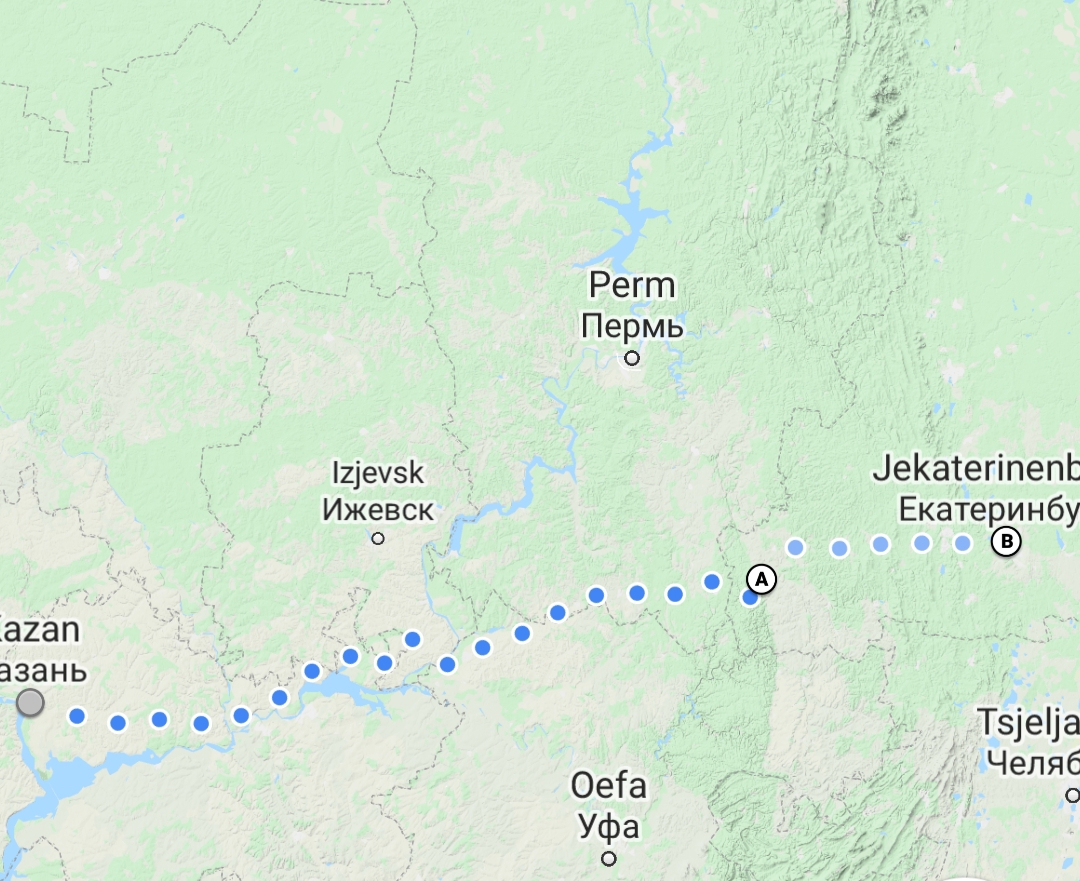
Map of the Ural line between Kazan and B. Jekaterinenburg, showing at A. the small town of Krasnoufimsk…
Krasnoufimsk (Russian: Красноуфи́мск) is a town in Sverdlovsk Oblast, Russia, located on the Ufa River (a tributary of the Kama), 224 kilometers (139 mi) from Yekaterinburg. Population: 39,765 (2010 Census); 43,595 (2002 Census); 45,618 (1989 Census).
Train life
After a short break on this sunny day (until now all days in Russia had been bright and sunny ?), the provodnitsa reminded us to board the train again, for now we would go for the Ural mountain crossing. Soon the train drove through forested areas again, occasionally passing a tiny village with super cute wooden houses…
The gentle sun was showing us a fresh green pastoral landscape with the first signs of Autumn in the yellow colors of the leaves.
Noon and time to eat some noodles. Part of those I bought in The Netherlands before my journey started and I stuffed my backpack with those. But in addition I bought more exotic tasting noodles in Moscow and Kazan and en route. Some of those were…quite…spicy??
To make a delicious bowl of noodles and a cup of coffee (I purchased Nescafe instant cappuccino which actually gave me a quite decent coffee with a good foam layer on top, not that it tastes like real cappuccino but it was comparable to DE cappuccino coffee rounds), tea or instant soup (packed all of those even before travelling), you needed hot water to pour over the dried noodles and instant powders. On Russian trains there is a metal, coal or wood heated samovar in every train carriage and one of the tasks of the provodnitsa is to keep the water boiling. So you need a thermos bottle to catch the water and contain it. Then you just walk to the samovar with the empty bottle and tap the boiling water, which is quite tricky on a speeding train.
And then its time for lunch…
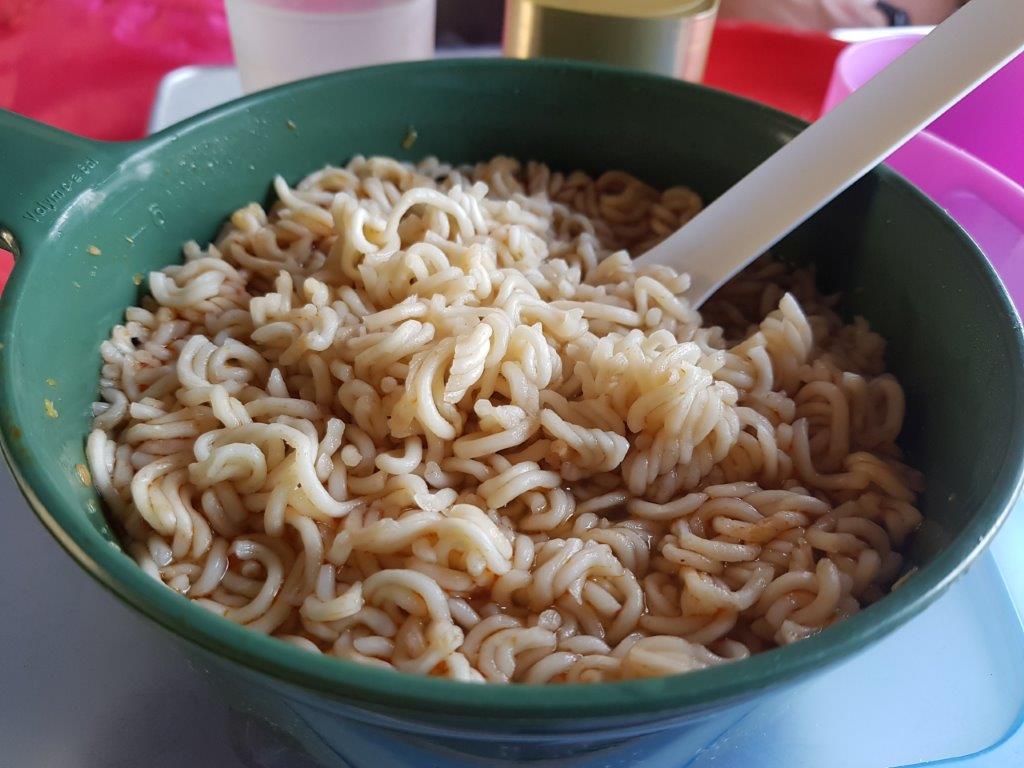 The train drove through European Russias east, passing rivers and lakes…
The train drove through European Russias east, passing rivers and lakes…
Europe –> Asia
The next stop was in the central Ural (not that there were high mountains there either). The train had one of its longest stops at the village of Druzhnino and it turned out to be one of the very best train stops en route.
By now we had entered Asia. There is an obilisk that can be seen from the train but The Wandelgek missed it and so did probably everyone else.
Druzhnino Railway Station
Druzhinino (Russian: Дружинино) is an urban locality (an urban-type settlement) in Nizhneserginsky District of Sverdlovsk Oblast, Russia. Population: 3,793 (2010 Census); 2,945 (2002 Census); 3,954 (1989 Census).
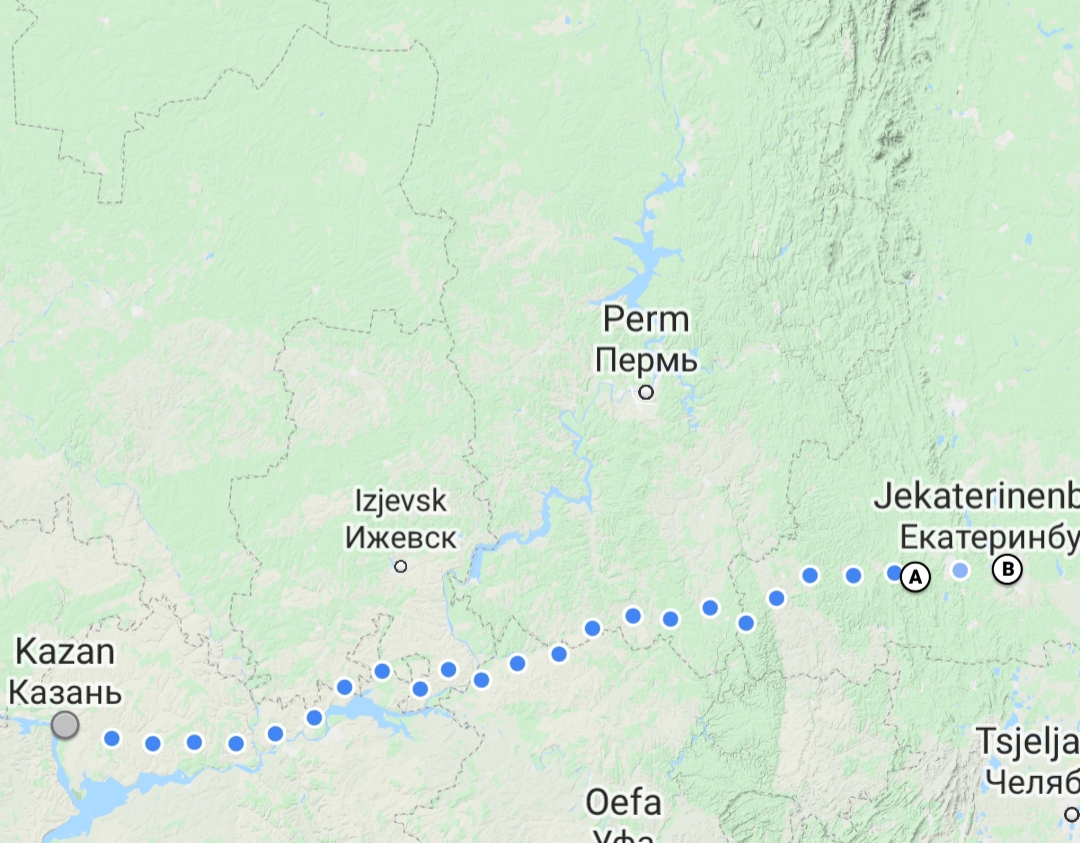
Map of the Ural line between Kazan and B. Jekaterinenburg, showing at A. the small town of Druzhnino…
At 1st The Wandelgek looked around at the many locomotives and transport carriages. There were high walking bridges that crossed the tracks and he climbed the stair to make some pics from above…
Visit to the little Ural village of Druzhnino
As I noted before: No mountains in view, but still this is amidst the Ural, only the mountains have waned into low hills or even less. This stop was one of the longest on this entire journey and therefore there was time to leave the station and visit the small village. It consisted of small painted wooden houses, connected by dirt roads. Walking on those dirtroads I started to think what life would be like here when winter would arrive. Russia and Siberia are covered in snow which melts in Spring and leaves mud roads where trucks and cars would get stuck. This obviously emphasized the importance of this village (although this village is actually part of a larger community which was located futher from the station) being unlocked by the Ural Line railroad, something that would become even more important for villages, towns and cities in Siberia…
At the end of the buildings, the road moved onwards between fields towards the far horizon…
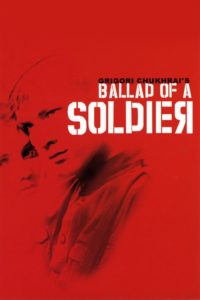 It reminded me of the final scene of one of my favorite movies: Ballada o Soldata, a B/W movie by director Victor Chukrai about the small, highly personal and individual losses that are caused by something not graspable like World War… In the final scene, the mother of the main character (a young soldier who became a hero on the battlefield and was allowed to visit his mom deep in Russia to help het fix the tin roof of her home), stands. He travels through Russia towards his home, but arrives just minutes before he has to leave again to return in time to the frontlines.In the final scene, the mother of the main character (a young soldier who became a hero on the battlefield and was allowed to visit his mom deep in Russia to help her fix the tin roof of her home), stands on the verge of the village looking to the horizon where a truck carrying her son slowly dissappears. He traveled through Russia towards his home, but arrived just minutes before he has to leave again to return in time to the frontlines. She has barely time to hug him and he leaves the village and her on a road like this… never to return.
It reminded me of the final scene of one of my favorite movies: Ballada o Soldata, a B/W movie by director Victor Chukrai about the small, highly personal and individual losses that are caused by something not graspable like World War… In the final scene, the mother of the main character (a young soldier who became a hero on the battlefield and was allowed to visit his mom deep in Russia to help het fix the tin roof of her home), stands. He travels through Russia towards his home, but arrives just minutes before he has to leave again to return in time to the frontlines.In the final scene, the mother of the main character (a young soldier who became a hero on the battlefield and was allowed to visit his mom deep in Russia to help her fix the tin roof of her home), stands on the verge of the village looking to the horizon where a truck carrying her son slowly dissappears. He traveled through Russia towards his home, but arrived just minutes before he has to leave again to return in time to the frontlines. She has barely time to hug him and he leaves the village and her on a road like this… never to return.
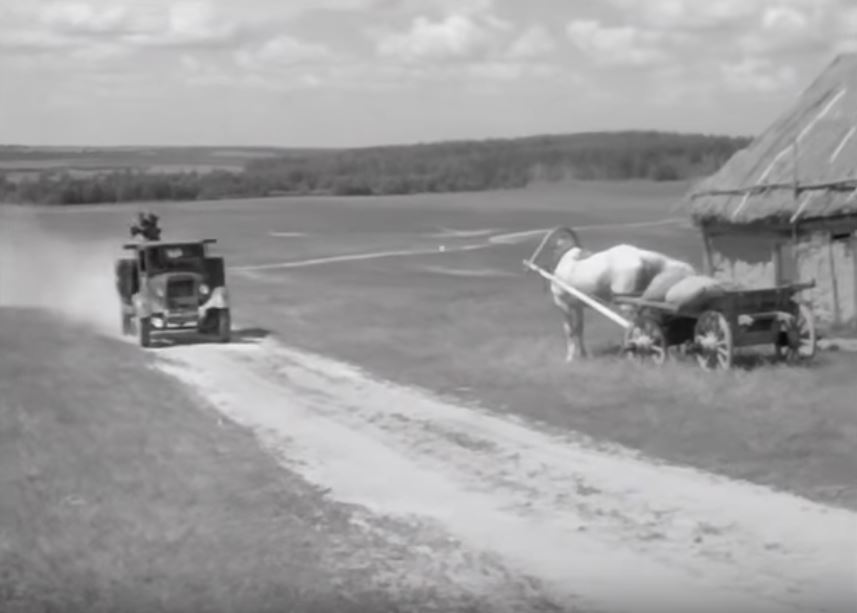
From the final of Ballada o Soldata (1959): A dirt road leaving the wooden village, that very much looked like the road leaving Druzhnino…
The scene made a huge impact on The Wandelgek because it reminded him of a little church in the village of Wilp, just accross the river at his home town of Deventer, where a small plaque commemorates Canadian soldiers that crossed the river IJssel to free the city of Deventer at the end of WWII. The plaque showed their names, very young age and the tiny, far away and never heard of villages somewhere in Canada where they had a life, where they knew people who loved them, where they went to school or where they simply felt at home. It is bitter to know that they fell in an unknown country, so far away, defending freedom. It illustrates the total craziness of war. The movie does that too, on a very personal level. And Russia had its share of war casualties too.
After a stop of about an hour, The Wandelgek had to board the train again for the final stage towards Yekaterinburg/Jekaterinenburg.
Arrival at Jekaterinenburg/Yekaterinburg Railway Station
Yekaterinburg (Russian: Екатеринбу́рг), alternatively romanized Ekaterinburg, is the fourth-largest city in Russia and the administrative centre of Sverdlovsk Oblast, located on the Iset River east of the Ural Mountains, in the middle of the Eurasian continent, on the Asian side of the boundary between Asia and Europe. It is the main cultural and industrial centre of the oblast. In 2018, it had an estimated population of 1,501,652. Yekaterinburg has been dubbed the “third capital of Russia”, as it is ranked third by the size of economy, culture, transportation and tourism. It is located about 1,420 kilometres (880 mi) to the east of Moscow.
The region was settled and developed by Novgorodians by the 11th century. Yekaterinburg was founded on 18 November 1723 and named after the Russian emperor Peter the Great’s wife, who after his death became Catherine I, Yekaterina being the Russian form of her name. The city served as the mining capital of the Russian Empire as well as a strategic connection between Europe and Asia at the time. In 1781, Catherine the Great gave Yekaterinburg the status of a district town of Perm Province, and built the main road of the Empire, the Siberian Route, through the city. Yekaterinburg became a key city to Siberia, which had rich resources, and was known as the “window to Asia”, a reference to Saint Petersburg as a “window to Europe”. In the late 19th century, Yekaterinburg became one of the centres of revolutionary movements in the Urals. In 1924, after Russia became a socialist state, the city was named Sverdlovsk (Russian: Свердло́вск) after the Bolshevik leader Yakov Sverdlov. During the Soviet era, Sverdlovsk was turned into an industrial and administrative powerhouse. In 1991, after the fall of the Soviet Union, the city returned to its historical name.
Yekaterinburg is one of the most important economic centres in Russia, and the city had experienced economic and population growth recently. Some of the tallest buildings in Russia are located in the city.
The train now reduced speed as it entered the outskirts of the city. It was time to pack, gather the sheets and gather the garbage…
The Wandelgek left the Ural Line train and stepped on the platform. Then he left the station and went to his hotel, where he would spend one night before travelling deeper in to Asia and Siberia on the main branch of the Trans Siberian Express.

